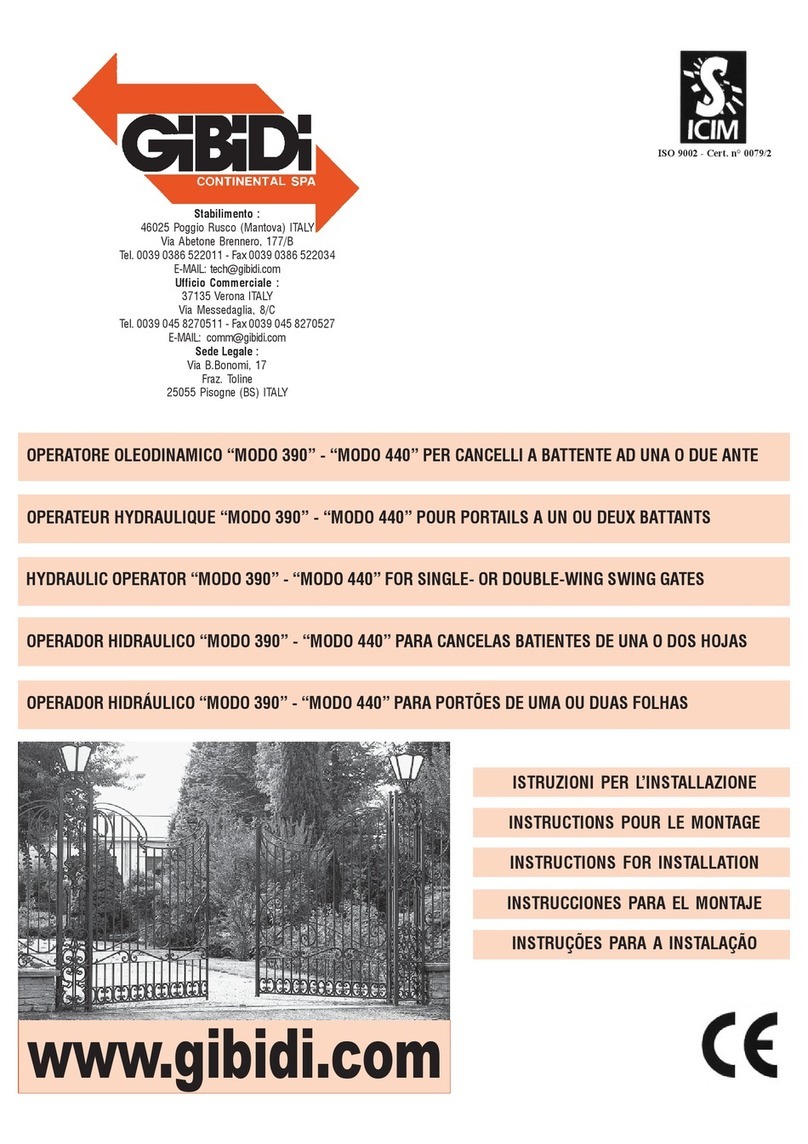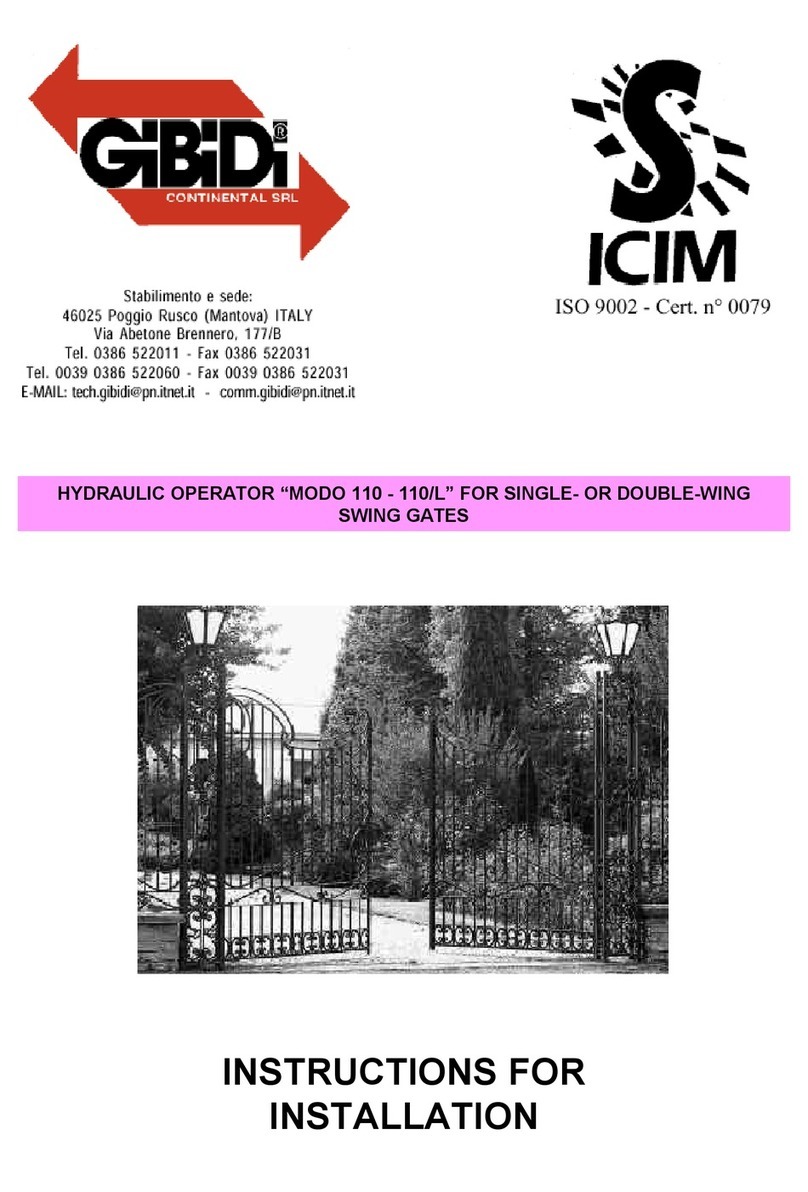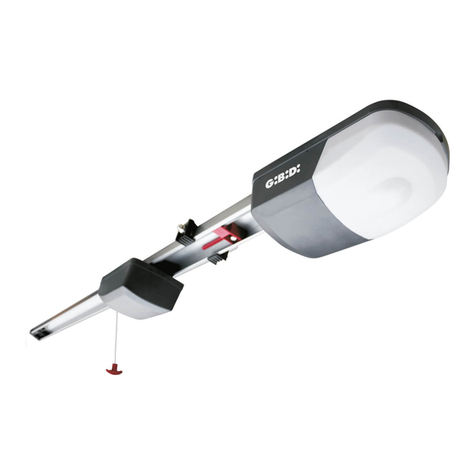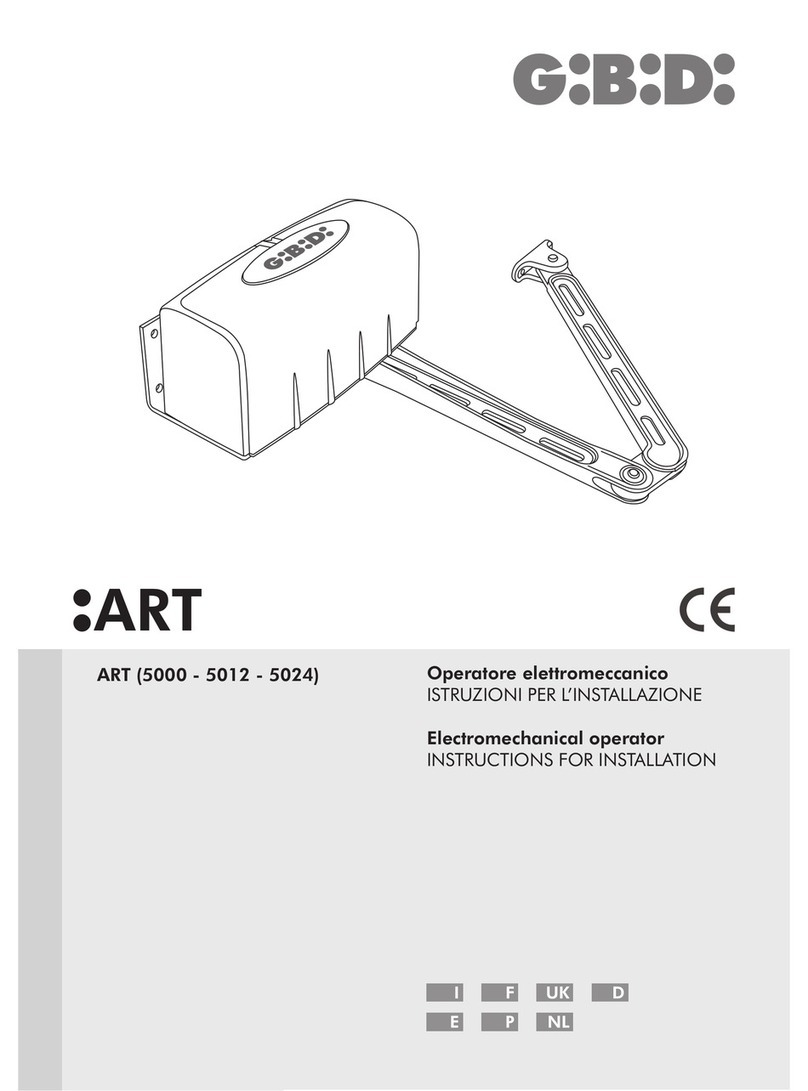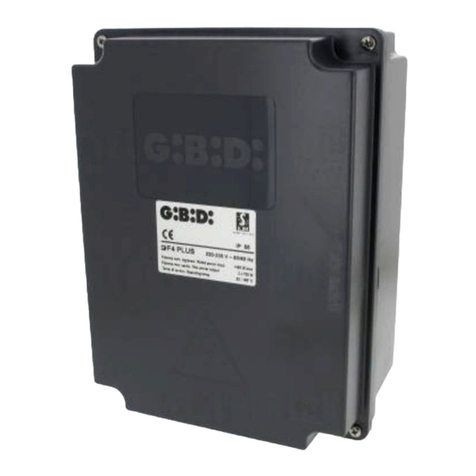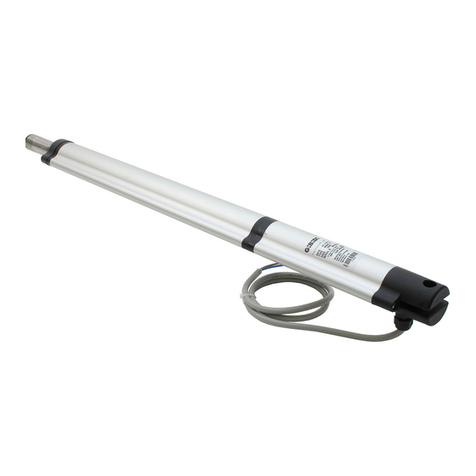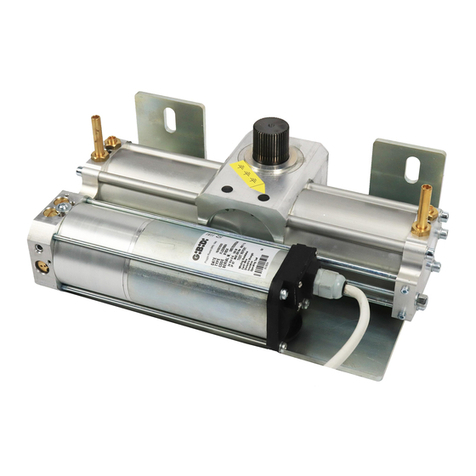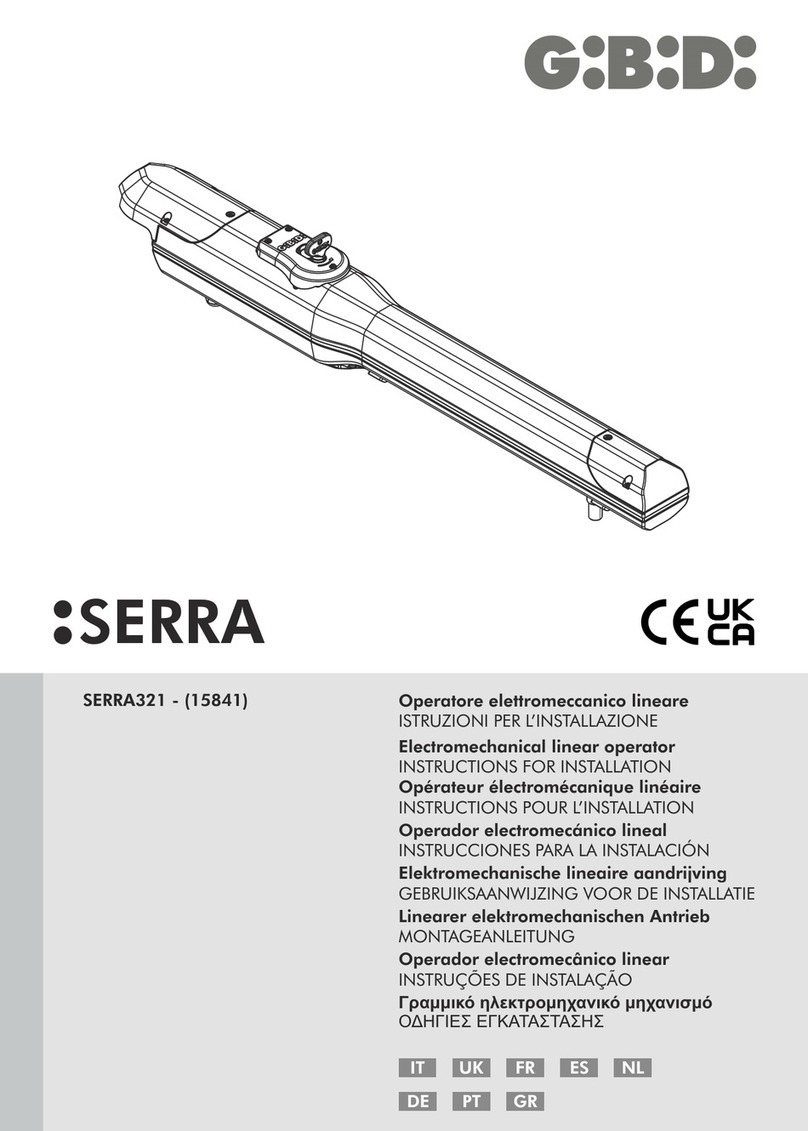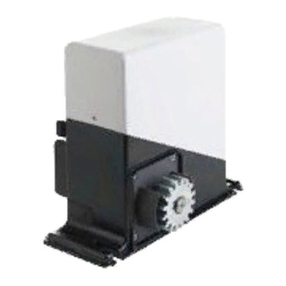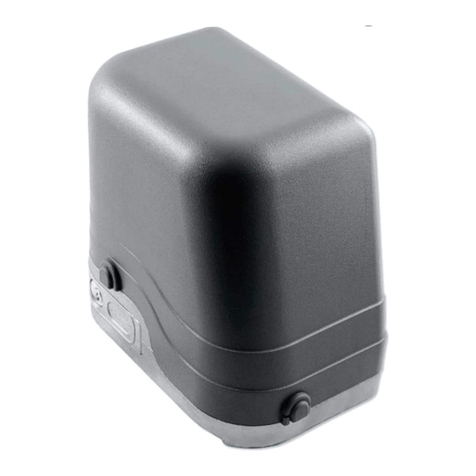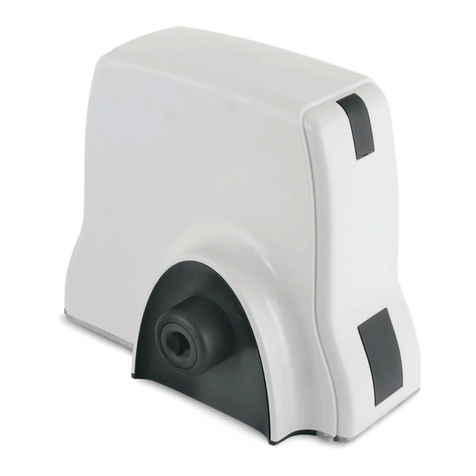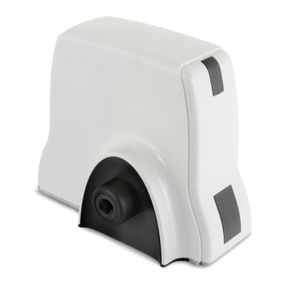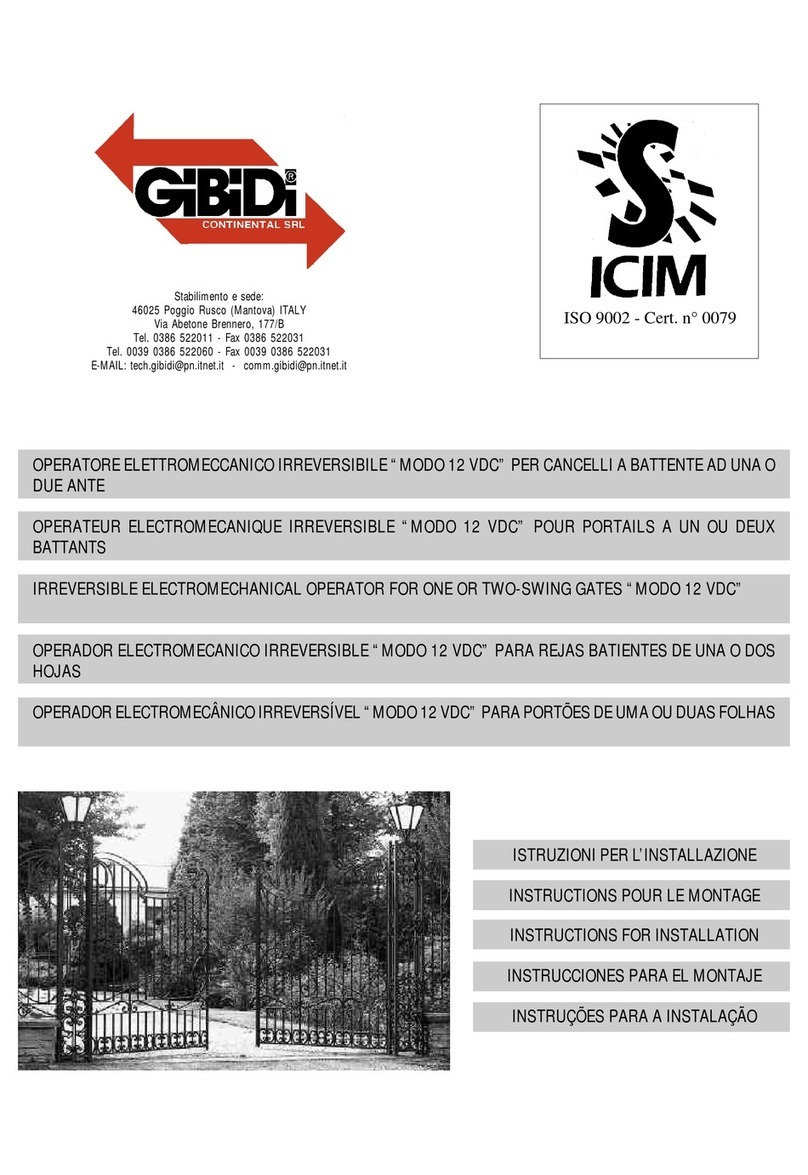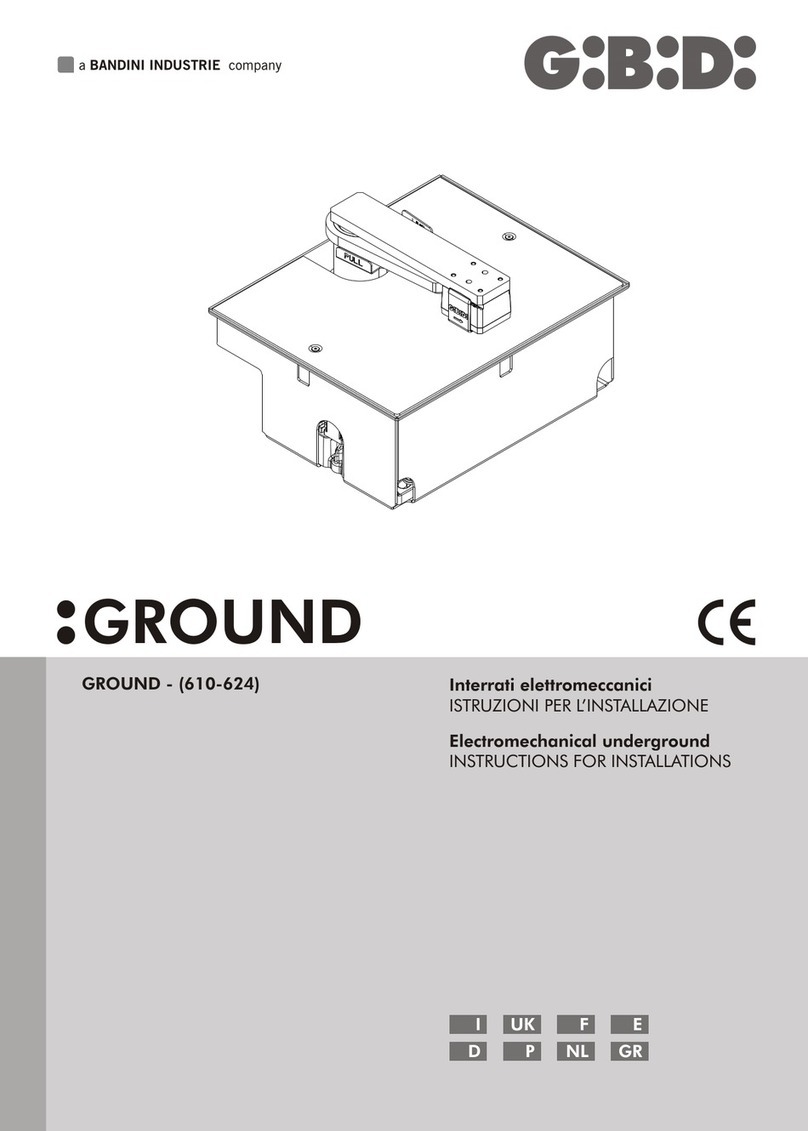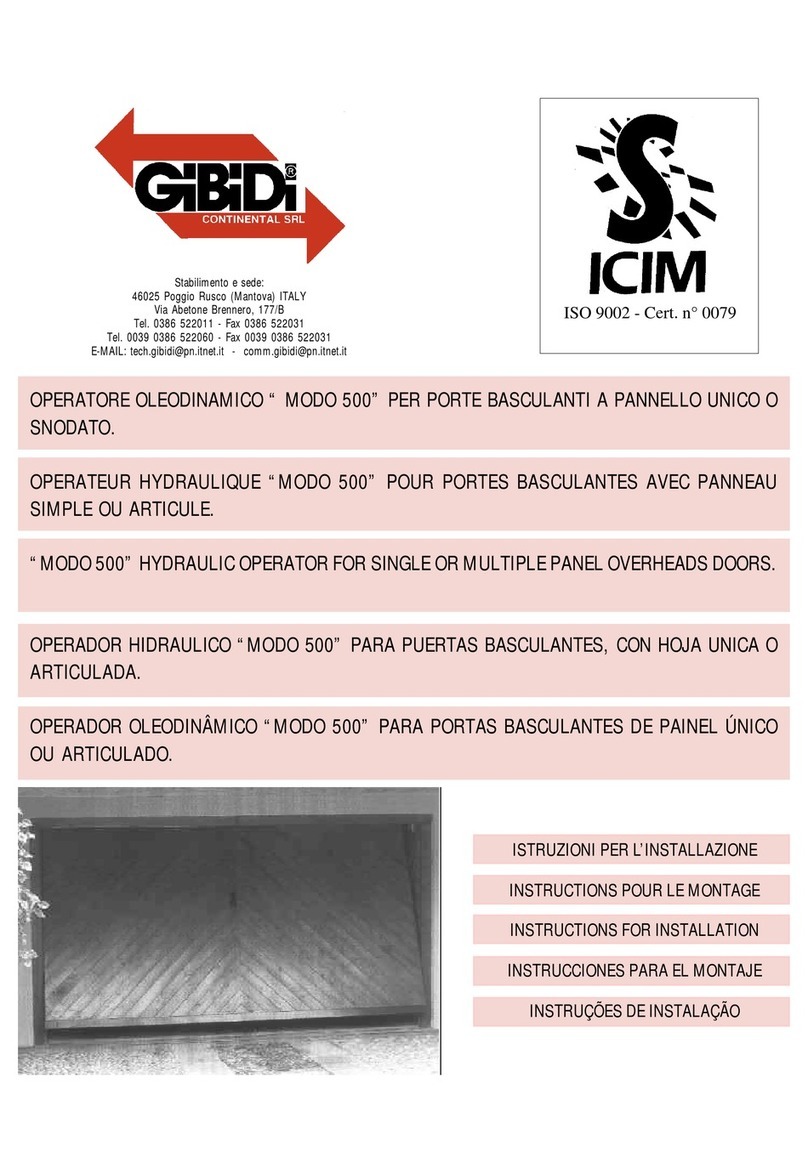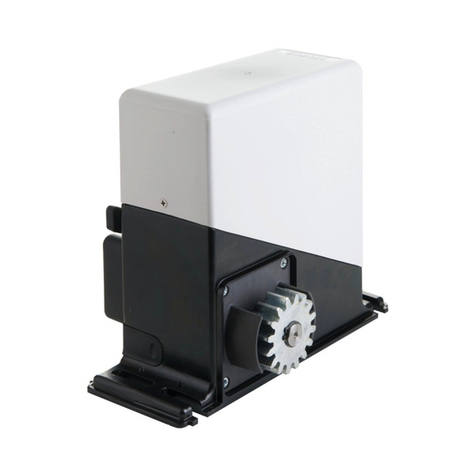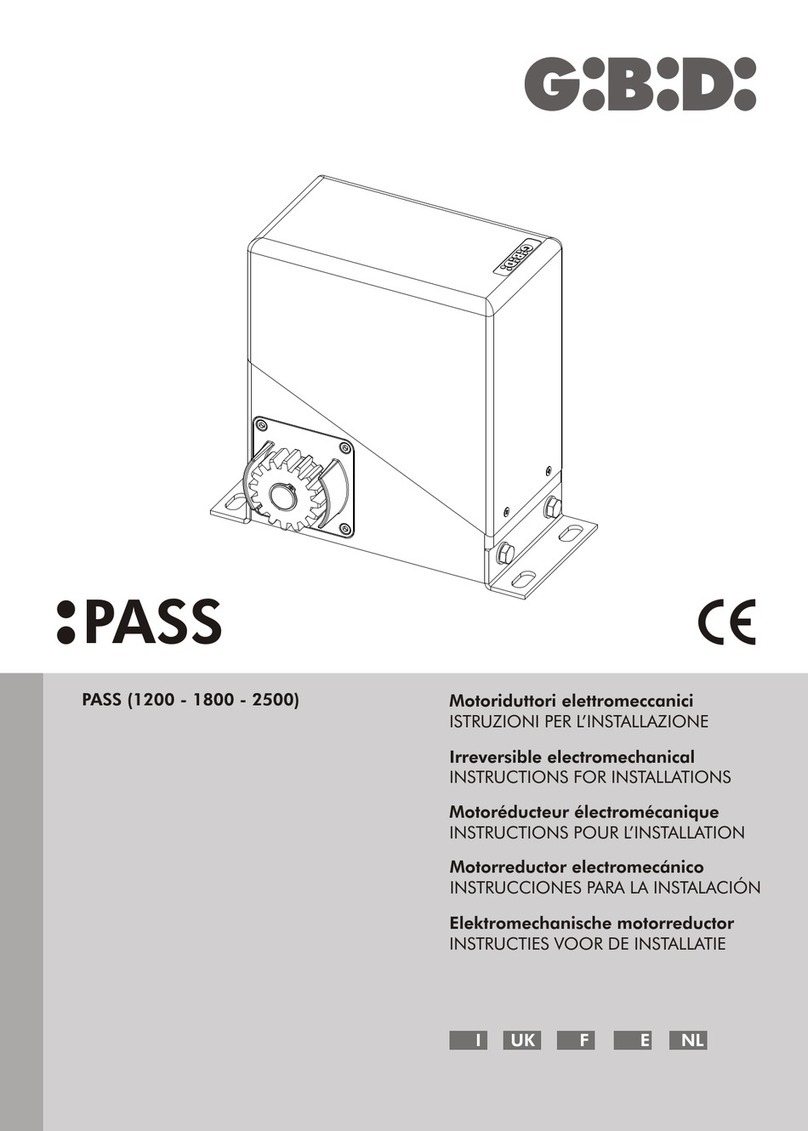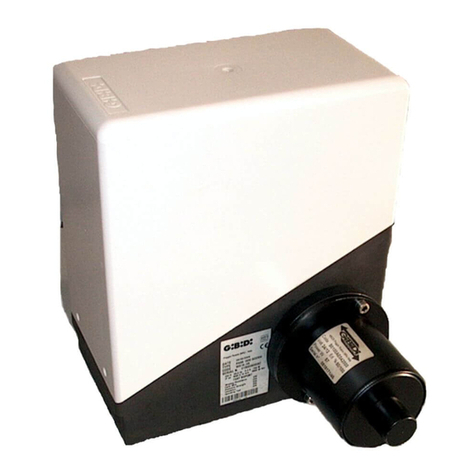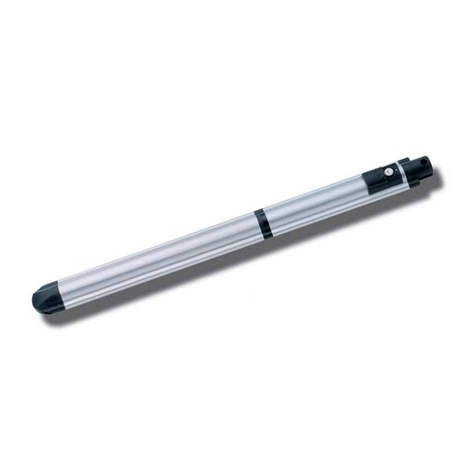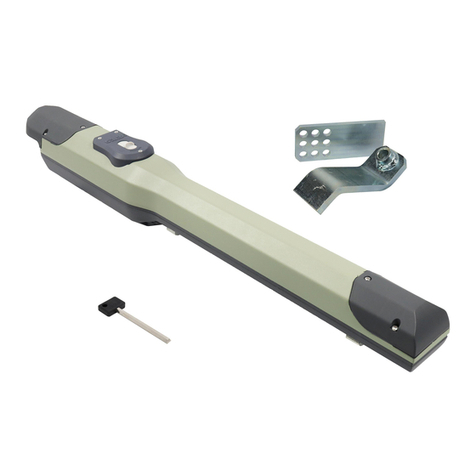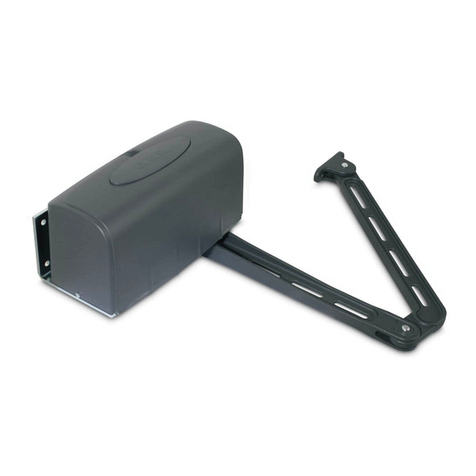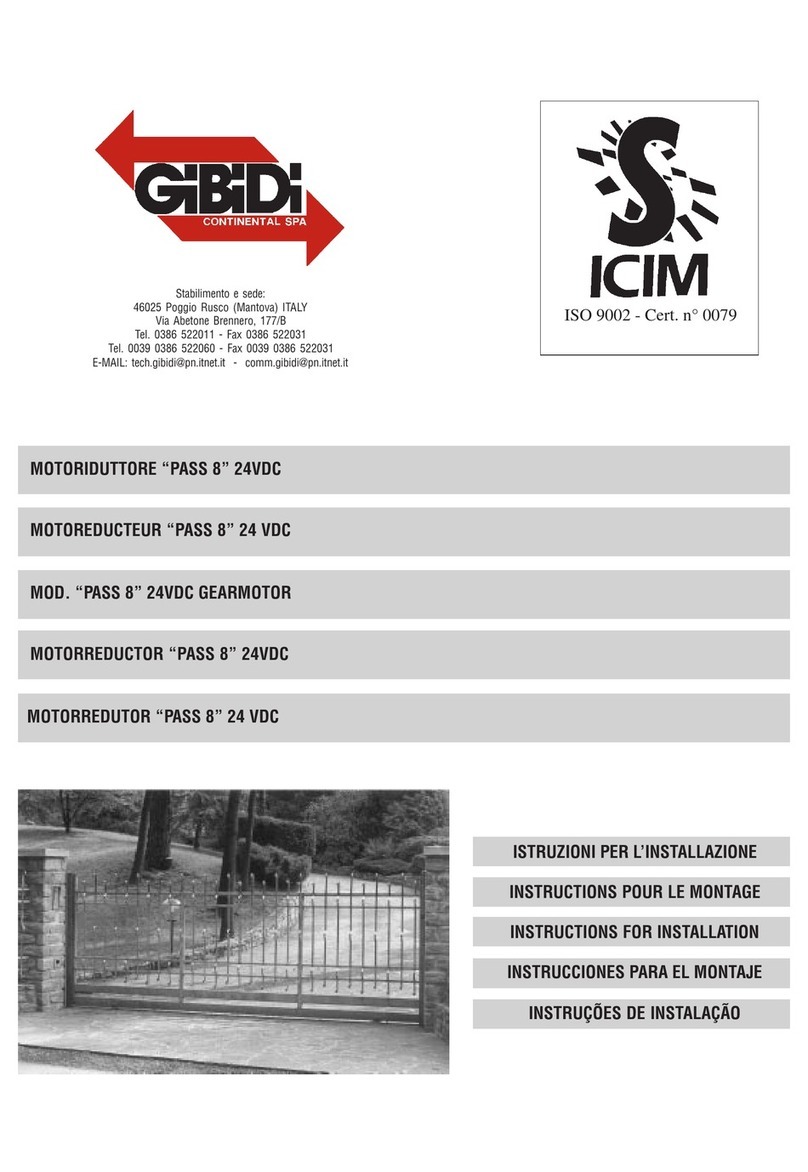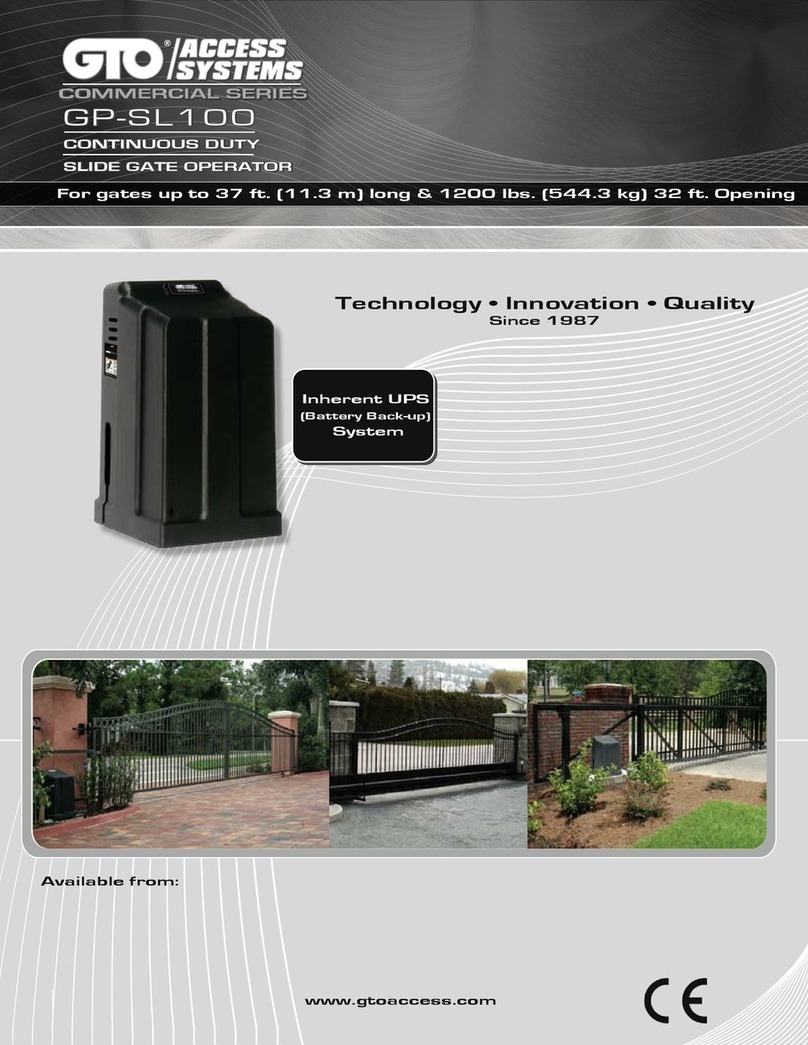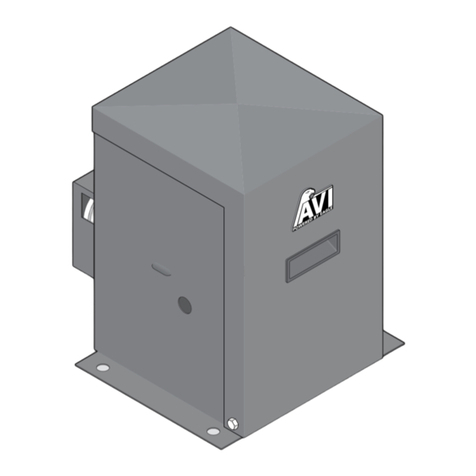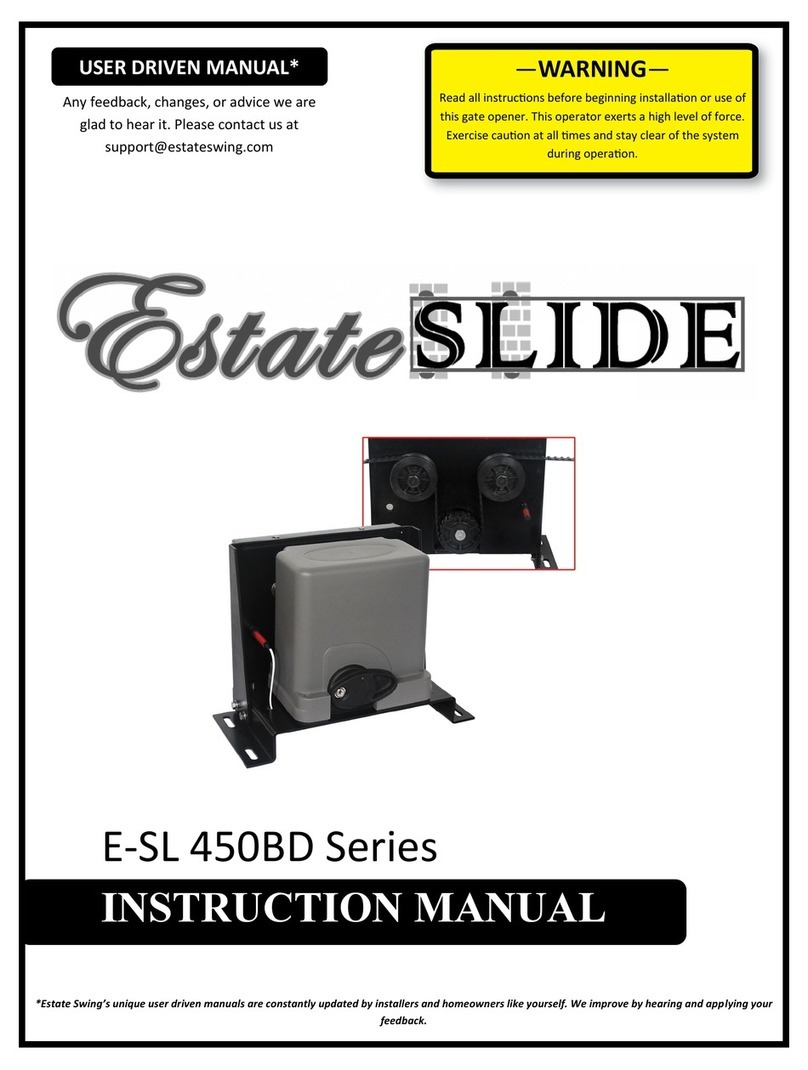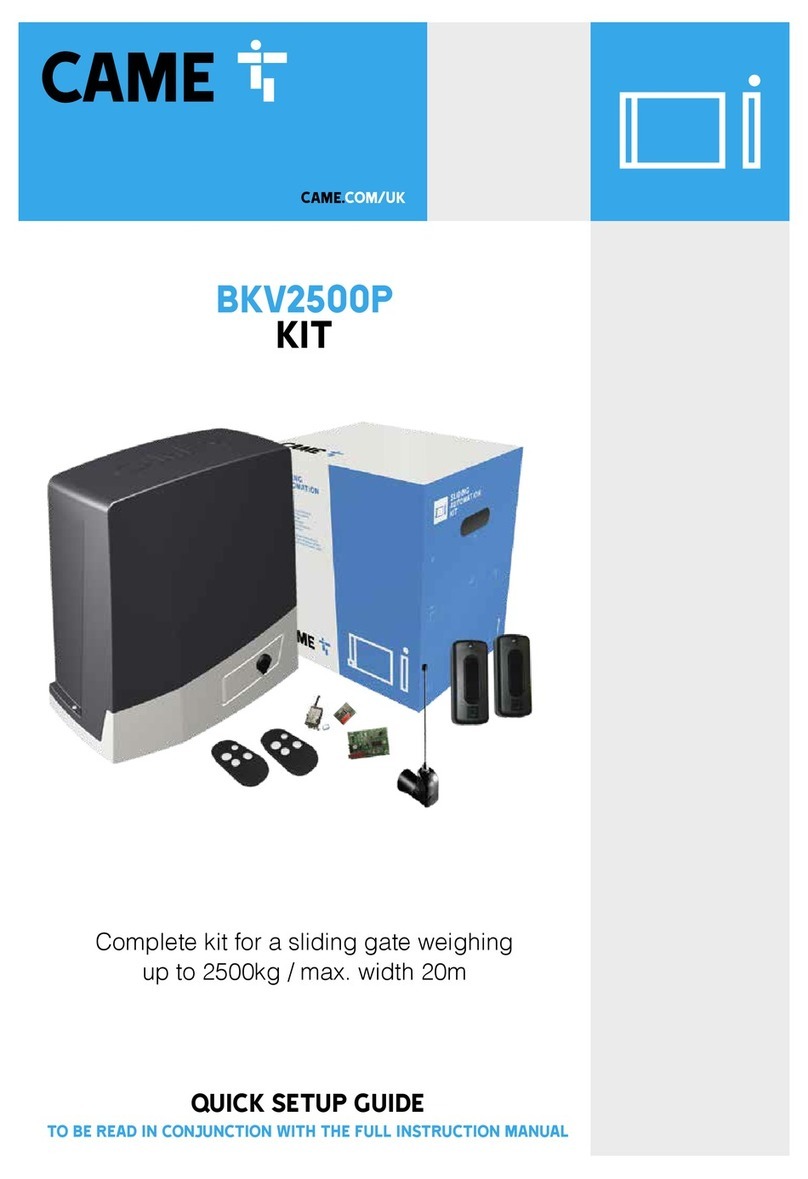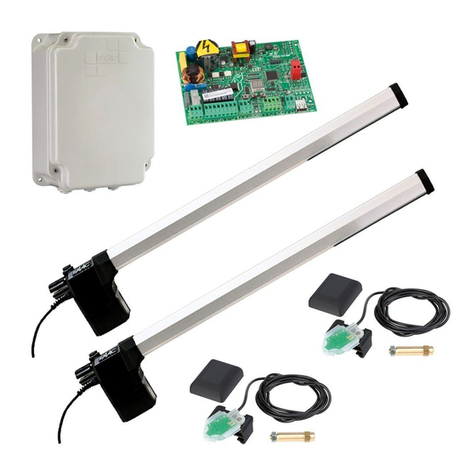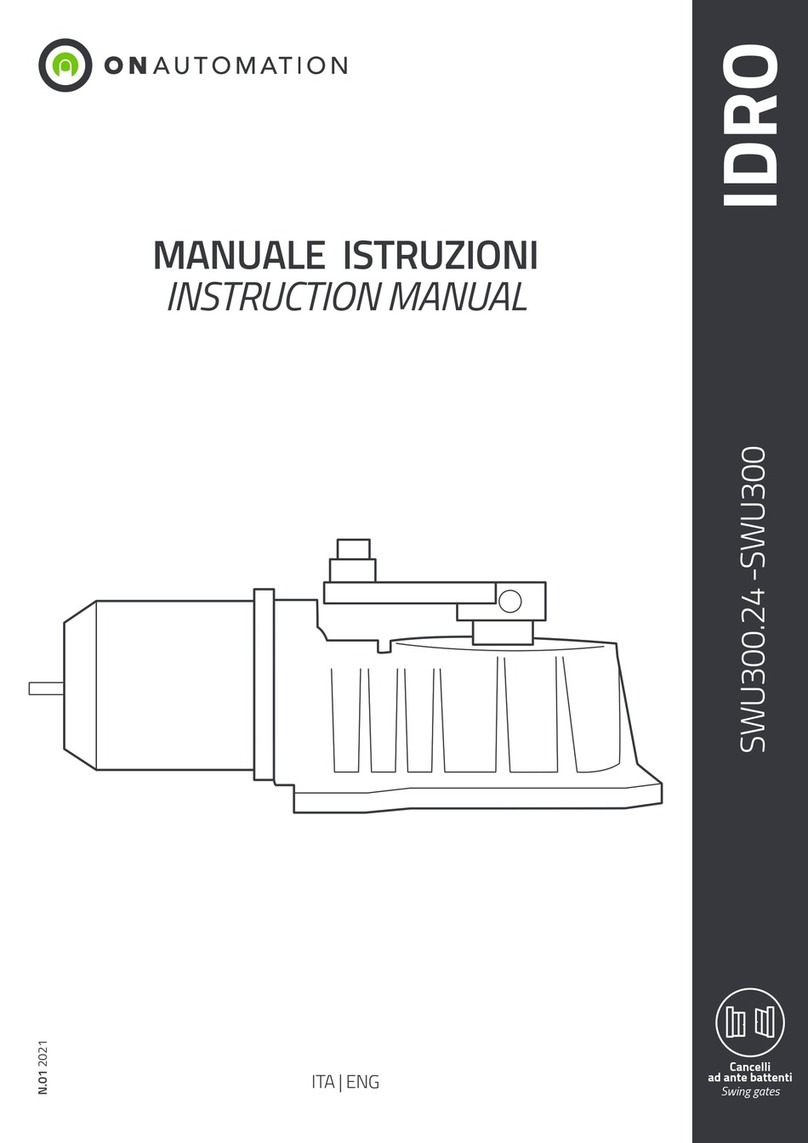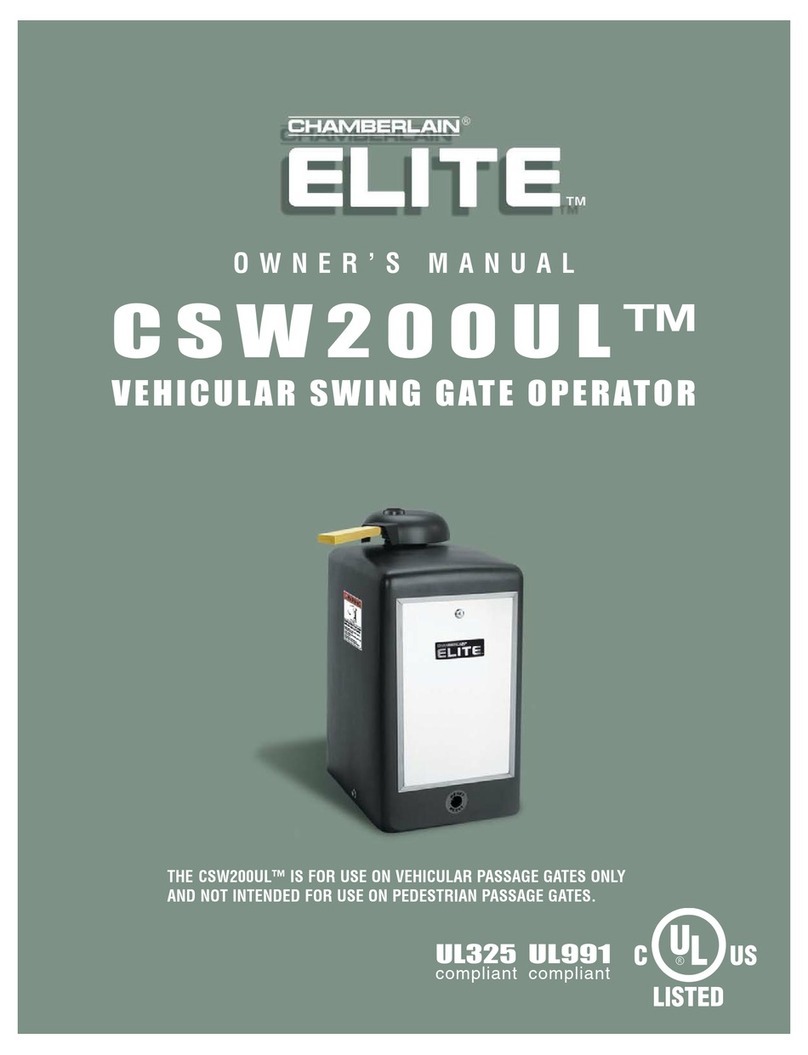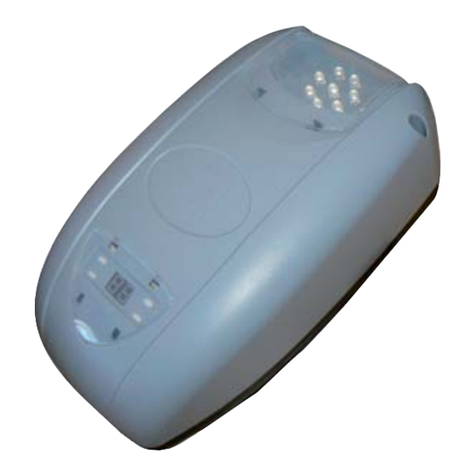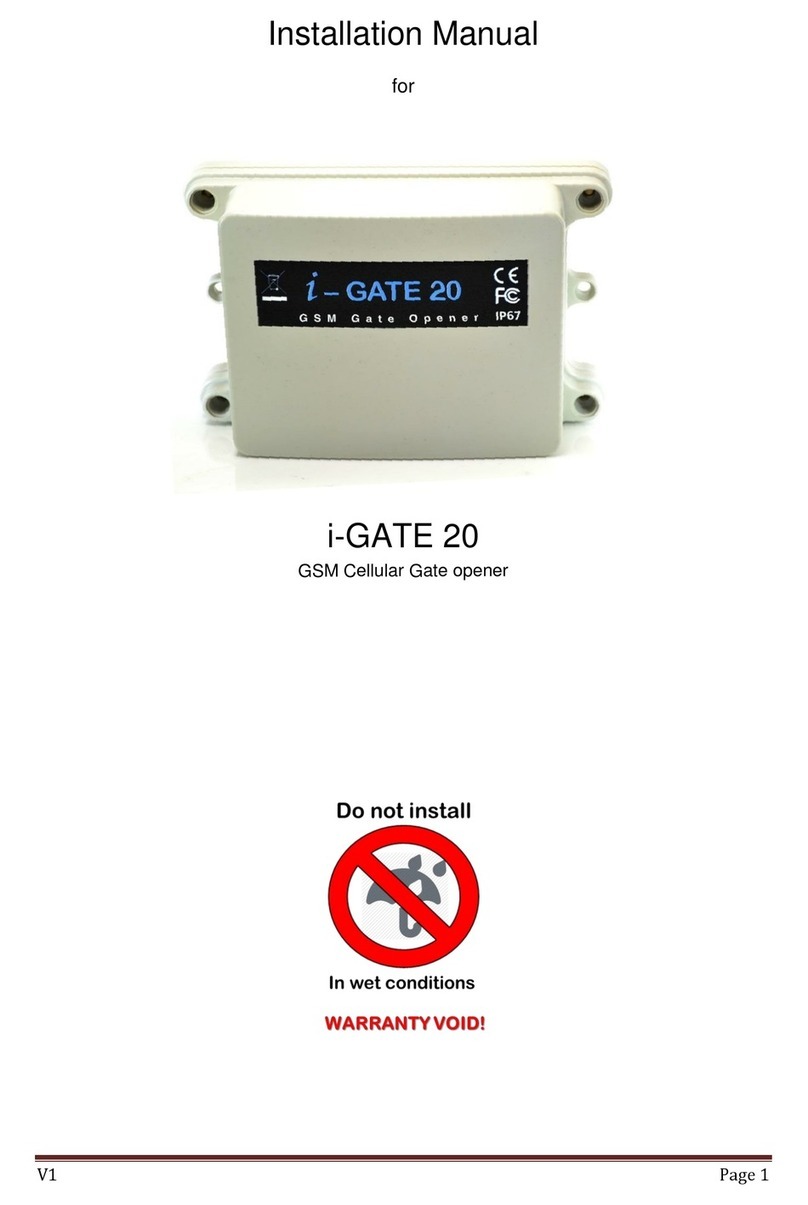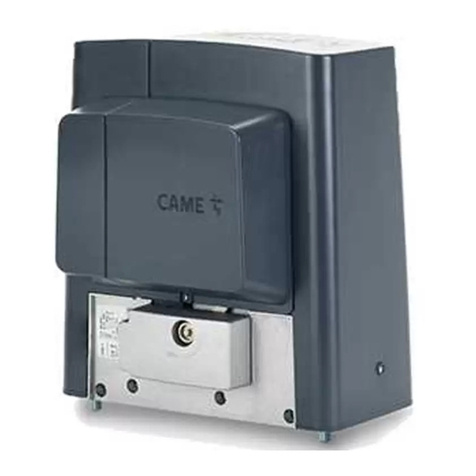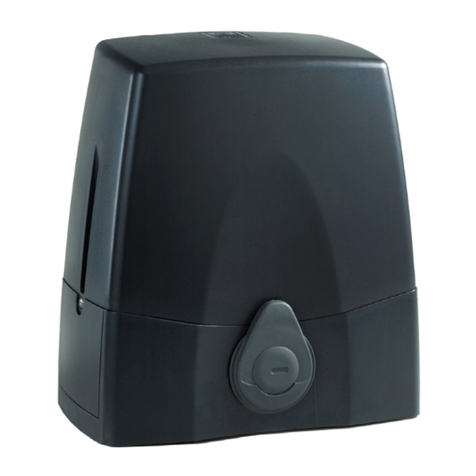GiBiDi SL 544 Guide

IT UK
SL
FR ES NL
SL - (544) Motoriduttore elettromeccanico
ISTRUZIONI PER L’INSTALLAZIONE
Electromechanical gearmotor
INSTRUCTIONS FOR INSTALLATION
M eotoréducteur électromécaniqu
INSTRUCTIONS POUR L’INSTALLATION
M
INSTRUCCIONES PARA LA INSTALACIÓN
otorreductor electromecánico
Elektromechanische reductiermotor
GEBRUIKSAANWIJZING VOOR DE INSTALLATIE

SL SL
2 3
1
90°
0÷50 mm
35 mm
SL 544
400mm115mm
155 mm
325 mm
150
200
350
90°
0÷50 mm
35 mm
SL 544
1
3
4
5
5
6
9
4
8
7
2
5
2 3
45
10
A
35 mm
5-12 mm
12 mm
30 mm
15 mm
50 mm
300 mm
1312
30 mm
20 mm
30 mm
20
mm
7 m
m
11
2-4 mm
A
40 mm
76
98

SL SL
2 3
1
90°
0÷50 mm
35 mm
SL 544
400mm115mm
155 mm
325 mm
150
200
350
90°
0÷50 mm
35 mm
SL 544
1
3
4
5
5
6
9
4
8
7
2
5
2 3
45
10
A
35 mm
5-12 mm
12 mm
30 mm
15 mm
50 mm
300 mm
1312
30 mm
20 mm
30 mm
20
mm
7 m
m
11
2-4 mm
A
40 mm
76
98

6
STOP STOP
STOP
STOP
6
SL SL
4 5
5-12 mm
35 mm
2 mm
14 15
16 17
18
19
22
20 21
C CO O
OPENING
APERTURA
OUVERTURE
APERTURA
CHIUSURA
CLOSING
FERMETURE
CIERRE
OPENING
APERTURA
OUVERTURE
APERTURA
CHIUSURA
CLOSING
FERMETURE
CIERRE

6
STOP STOP
STOP
STOP
6
SL SL
4 5
5-12 mm
35 mm
2 mm
14 15
16 17
18
19
22
20 21
C CO O
OPENING
APERTURA
OUVERTURE
APERTURA
CHIUSURA
CLOSING
FERMETURE
CIERRE
OPENING
APERTURA
OUVERTURE
APERTURA
CHIUSURA
CLOSING
FERMETURE
CIERRE

SL SL
6 7
23 24
25 26
27 28 32
31
200 mm
271 mm
322 mm
415 mm
415 mm
D
E
F
n°2; M5 x 10 mm
A
B
C
29 30

SL SL
6 7
23 24
25 26
27 28 32
31
200 mm
271 mm
322 mm
415 mm
415 mm
D
E
F
n°2; M5 x 10 mm
A
B
C
29 30

SL SL
ITIT
8 9
Il nuovo motoriduttore a 24V SL 544 permette di automatizzare, facilmente e rapidamente cancelli scorrevoli di
piccole e medie dimensioni fino a 500Kg.
L'automazione già provvista di centrale di comando integrata, facilita la messa a norma dell'impianto secondo la
normativa EN12453.
• Prima di procedere con l'installazione bisogna predisporre a monte dell'impianto un interruttore magneto termico
e differenziale con portata massima 10A. L'interruttore deve garantire una separazione omnipolare dei contatti,
con distanza di apertura di almeno 3mm.
• Tutti i materiali presenti nell'imballo non devono essere lasciati alla portata dei bambini in quanto potenziali fonti
di pericolo.
• Il costruttore declina ogni responsabilità ai fini del corretto funzionamento dell'automazione nel caso non
vengano utilizzati i componenti e gli accessori di propria produzione e idonei per l'applicazione prevista.
• Al termine dell'installazione verificare sempre con attenzione il corretto funzionamento dell'impianto e dei
dispositivi utilizzati.
• Questa manuale d'istruzione si rivolge a persone abilitate all'installazione di “apparecchi sotto tensione” pertanto
si richiede una buona conoscenza della tecnica, esercitata come professione e nel rispetto delle norme vigenti.
• La manutenzione deve essere eseguita da personale qualificato.
• Prima di eseguire qualsiasi operazione di pulizia o di manutenzione, scollegare l'apparecchiatura dalle rete di
alimentazione elettrica.
• Questo prodotto e stato progettato e costruito esclusivamente per I'utilizzo indicato in questa documentazione.
Usi non indicati in questa documentazione potrebbero essere fonte di danni al prodotto e fonte di pericolo.
• Verificare lo scopo dell'utilizzo finale e assicurarsi di prendere tutte le sicurezze necessarie.
• L'utilizzo dei prodotti e la loro destinazione ad usi diversi da quelli previsti, non è stata sperimentata dal
costruttore, pertanto i lavori eseguiti sono sotto la completa responsabilità dell'installatore.
• Segnalare l'automazione con targhe di avvertenza che devono essere visibili.
• Avvisare l'utente che i bambini o animali non devono giocare o sostare nei pressi del cancello.
• Proteggere adeguatamente i punti di pericolo per esempio mediante l'uso di una costa sensibile.
• Verificare se I 'impianto di terra e realizzato correttamente: collegare tutte le parti metalliche della chiusura (porte,
cancelli, ecc.) e tutti i componenti dell'impianto provvisti di morsetto di terra.
• Usare esclusivamente parti originali per qualsiasi manutenzione o riparazione.
• Non eseguire alcuna modifica ai componenti dell'automazione se non espressamente autorizzata dalla Ditta.
Utilizzare pressacavi adeguati ad assicurare la corretta connessione meccanica del cablaggio e tali da mantenere il
grado di protezione IP55 della scatola.
PREMESSA
AVVERTENZA PER L'INSTALLAZIONE
In caso di guasto o anomalie di funzionamento staccare l'alimentazione a monte dell'apparecchiatura e chiamare
l'assistenza tecnica.
Verificare periodicamente il funzionamento delle sicurezze. Le eventuali riparazioni devono essere eseguite da
personale specializzato usando materiali originali e certificati.
Il prodotto non deve essere usato da bambini o persone con ridotte capacità fisiche, sensoriali o mentali, oppure
mancanti di esperienza e conoscenza, a meno che non siano stati correttamente istruiti.
Non accedere alla scheda per regolazioni e/o manutenzioni..
AVVERTENZE PER L'UTENTE
1- Motoriduttore; alimentazione 220-230V cavo 3x1.5mm² (attenersi alle norme vigenti).
2- Trasmettitore fotocellula; cavo 2x0,5mm².
3- Ricevitore fotocellula; cavo 4x0,5 mm².
4- Antenna; cavo coassiale schermato.
5- Costa; cavo 4x0,5mm².
6- Cremagliera.
7- Selettore a chiave; cavo 3x0,5mm².
8- Segnalatore a luce lampeggiante a 24Vdc ; cavo 2x0,75mm². (se presente rx cavo 12x0.75 mm²).
9- Interruttore magnetotermico omnipolare con apertura minima dei contatti pari a 3mm. Linea di alimentazione
all'apparecchiatura 220-230V 50-60Hz cavo 3x1,5mm² (attenersi alle norme vigenti).
PREDISPOSIZIONI ELETTRICHE
DATI TECNICI
Tensione di alimentazione
Alimentazione motore
Potenza assorbita
Corrente assorbita
Termoprotezione
Condensatore di spunto
Velocità max
Coppia max
Temperatura d'esercizio
Grado di protezione
Frequenza d'uso (%)
Lunghezza massima anta
Encoder
Operatore
Tipo
SL 544
Motoriduttore elettromeccanico irreversibile
220/230Vac 50-60Hz
6 m
Integrato nel motore
12 N/m
-20°C + 60°C
IP 55
90% (a 20°C)
-
0,2 m/sec
24Vdc
MAX 100W
MAX 4A
-
ATTENZIONE: IMPORTANTI ISTRUZIONI DI SICUREZZA.
E' importante per la sicurezza delle persone seguire queste istruzioni.
Conservare il presente libretto di istruzioni.

SL SL
ITIT
8 9
Il nuovo motoriduttore a 24V SL 544 permette di automatizzare, facilmente e rapidamente cancelli scorrevoli di
piccole e medie dimensioni fino a 500Kg.
L'automazione già provvista di centrale di comando integrata, facilita la messa a norma dell'impianto secondo la
normativa EN12453.
• Prima di procedere con l'installazione bisogna predisporre a monte dell'impianto un interruttore magneto termico
e differenziale con portata massima 10A. L'interruttore deve garantire una separazione omnipolare dei contatti,
con distanza di apertura di almeno 3mm.
• Tutti i materiali presenti nell'imballo non devono essere lasciati alla portata dei bambini in quanto potenziali fonti
di pericolo.
• Il costruttore declina ogni responsabilità ai fini del corretto funzionamento dell'automazione nel caso non
vengano utilizzati i componenti e gli accessori di propria produzione e idonei per l'applicazione prevista.
• Al termine dell'installazione verificare sempre con attenzione il corretto funzionamento dell'impianto e dei
dispositivi utilizzati.
• Questa manuale d'istruzione si rivolge a persone abilitate all'installazione di “apparecchi sotto tensione” pertanto
si richiede una buona conoscenza della tecnica, esercitata come professione e nel rispetto delle norme vigenti.
• La manutenzione deve essere eseguita da personale qualificato.
• Prima di eseguire qualsiasi operazione di pulizia o di manutenzione, scollegare l'apparecchiatura dalle rete di
alimentazione elettrica.
• Questo prodotto e stato progettato e costruito esclusivamente per I'utilizzo indicato in questa documentazione.
Usi non indicati in questa documentazione potrebbero essere fonte di danni al prodotto e fonte di pericolo.
• Verificare lo scopo dell'utilizzo finale e assicurarsi di prendere tutte le sicurezze necessarie.
• L'utilizzo dei prodotti e la loro destinazione ad usi diversi da quelli previsti, non è stata sperimentata dal
costruttore, pertanto i lavori eseguiti sono sotto la completa responsabilità dell'installatore.
• Segnalare l'automazione con targhe di avvertenza che devono essere visibili.
• Avvisare l'utente che i bambini o animali non devono giocare o sostare nei pressi del cancello.
• Proteggere adeguatamente i punti di pericolo per esempio mediante l'uso di una costa sensibile.
• Verificare se I 'impianto di terra e realizzato correttamente: collegare tutte le parti metalliche della chiusura (porte,
cancelli, ecc.) e tutti i componenti dell'impianto provvisti di morsetto di terra.
• Usare esclusivamente parti originali per qualsiasi manutenzione o riparazione.
• Non eseguire alcuna modifica ai componenti dell'automazione se non espressamente autorizzata dalla Ditta.
Utilizzare pressacavi adeguati ad assicurare la corretta connessione meccanica del cablaggio e tali da mantenere il
grado di protezione IP55 della scatola.
PREMESSA
AVVERTENZA PER L'INSTALLAZIONE
In caso di guasto o anomalie di funzionamento staccare l'alimentazione a monte dell'apparecchiatura e chiamare
l'assistenza tecnica.
Verificare periodicamente il funzionamento delle sicurezze. Le eventuali riparazioni devono essere eseguite da
personale specializzato usando materiali originali e certificati.
Il prodotto non deve essere usato da bambini o persone con ridotte capacità fisiche, sensoriali o mentali, oppure
mancanti di esperienza e conoscenza, a meno che non siano stati correttamente istruiti.
Non accedere alla scheda per regolazioni e/o manutenzioni..
AVVERTENZE PER L'UTENTE
1- Motoriduttore; alimentazione 220-230V cavo 3x1.5mm² (attenersi alle norme vigenti).
2- Trasmettitore fotocellula; cavo 2x0,5mm².
3- Ricevitore fotocellula; cavo 4x0,5 mm².
4- Antenna; cavo coassiale schermato.
5- Costa; cavo 4x0,5mm².
6- Cremagliera.
7- Selettore a chiave; cavo 3x0,5mm².
8- Segnalatore a luce lampeggiante a 24Vdc ; cavo 2x0,75mm². (se presente rx cavo 12x0.75 mm²).
9- Interruttore magnetotermico omnipolare con apertura minima dei contatti pari a 3mm. Linea di alimentazione
all'apparecchiatura 220-230V 50-60Hz cavo 3x1,5mm² (attenersi alle norme vigenti).
PREDISPOSIZIONI ELETTRICHE
DATI TECNICI
Tensione di alimentazione
Alimentazione motore
Potenza assorbita
Corrente assorbita
Termoprotezione
Condensatore di spunto
Velocità max
Coppia max
Temperatura d'esercizio
Grado di protezione
Frequenza d'uso (%)
Lunghezza massima anta
Encoder
Operatore
Tipo
SL 544
Motoriduttore elettromeccanico irreversibile
220/230Vac 50-60Hz
6 m
Integrato nel motore
12 N/m
-20°C + 60°C
IP 55
90% (a 20°C)
-
0,2 m/sec
24Vdc
MAX 100W
MAX 4A
-
ATTENZIONE: IMPORTANTI ISTRUZIONI DI SICUREZZA.
E' importante per la sicurezza delle persone seguire queste istruzioni.
Conservare il presente libretto di istruzioni.

10 11
ITIT
SL SL
Verificare che la struttura del cancello sia conforme a quanto previsto dalle normative vigenti e che il movimento
dell'anta sia lineare e privo di attriti.
Verifiche preliminari:
• Controllare che la struttura del cancello sia sufficientemente robusta. in ogni caso verificare che il cancello
abbia peso e dimensioni che rientrano nei limiti di impiego dell'operatore.
• Controllare che l'anta si muova manualmente e senza sforzo (punti di maggiore attrito)per tutta la corsa del
cancello sia in apertura che in chiusura.
• Controllare che la zona dove verrà fissato il motoriduttore non sia esposta ad allagamenti. Se così fosse
installare il motoriduttore sollevato da terra.
• Se il cancello non è di nuova installazione controllare lo stato di usura di tutti i componenti, sistemare o
sostituire le parti difettose o usurate e, se necessario, effettuare gli opportuni interventi.
L'affidabilità e la sicurezza dell'automazione, è direttamente influenzata dallo stato della struttura del cancello.
AVVERTENZE PRELIMINARI
1- Togliere il cofano del motoriduttore svitando le viti presenti sotto i tappi laterali (6);
2- Togliere i dadi di fissaggio dai perni della piastra, posizionare il motoriduttore sulla piastra di fondazione
facendo passare i perni nelle apposite asole sulla carcassa (7). Fare attenzione a tenere il pignone rivolto
verso il cancello;
3- Eseguire le dovute regolazioni per la messa in piano del motoriduttore alzandolo o abbassandolo tramite gli
appositi regolatori A(8). Tenere dapprima il motoriduttore alzato di 2/4mm per poi abbassarlo dopo aver
ultimato il fissaggio della cremagliera (8);
4- Applicare le 4 rondelle e avvitare i 4 dadi per fissare il motoriduttore parallelo al cancello (ricordare di tenere
alzato il motoriduttore di 2/4mm) (8);
5- si raccomanda di mantenere le quote indicate in (8 - 9 - 15).
INSTALLAZIONE DEL MOTORIDUTTORE
1- Eseguire lo scavo per la piastra di fondazione rispettando le quote (2), disponendo la piastra secondo il
senso di chiusura del cancello (3 - 4), e ricordando che lo scavo deve essere di una profondità almeno pari alla
lunghezza delle zanche (5).
2- Far giungere i tubi flessibili per il passaggio dei cavi elettrici facendo attenzione alla posizione di uscita dalla
piastra degli stessi (3 - 4), lasciando che il tubo sporga dal foro della piastra di circa 30 - 40 mm (5).
3- Assicurarsi che la piastra sia a livello (5) e cominciare a riempire lo scavo con la gettata di calcestruzzo.
4- Attendere l'indurimento del cemento all'interno dello scavo.
5- Far passare i cavi elettrici (collegamento accessori e alimentazione elettrica) all'interno dei tubi flessibili
Per una maggiore maneggevolezza dei collegamenti elettrici con l'apparecchiatura si consiglia di tenere una
lunghezza dei cavi pari a 400mm dal foro della piastra di fondazione (5).
MURATURA DELLA PIASTRA
1- Portare manualmente il cancello in posizione di chiusura;
2- sbloccare il motoriduttore (vedi paragrafo dispositivo di sblocco);
3- predisporre la cremagliera (opzionale)(10 - 11 - 12);
4- appoggiare sul pignone il primo elemento della cremagliera in modo che sporga di 50 mm dal motoriduttore
(vedi 13) per lasciare lo spazio necessario alla staffa del finecorsa;
5- fissare l'elemento con la vite nell'apposita asola (o distanziale in base al tipo di cremagliera scelto (10 - 11 - 12).
Si consiglia di stringere le viti di fissaggio della cremagliera nella parte superiore dell'asola, in modo da
poterla alzare e mantenere il necessario gioco fra pignone e cremagliera in caso di abbassamento del
cancello;
6- continuare con il montaggio della cremagliera allineando i moduli uno dopo l'altro, ricordando che per fissare i
moduli correttamente bisogna utilizzare un pezzo di cremagliera di circa 150 mm per mettere in fase la
dentatura (14). Una volta fissato l'ultimo modulo provvedere a tagliare con un seghetto la parte sporgente.
7- finito di montare tutti i moduli effettuare manualmente alcune manovre di apertura e chiusura del cancello per
verificare che l'anta scorra libera e priva di attriti;
8- abbassare l'operatore con i 4 grani regolatori A(8) e bloccare il motoriduttore lasciando un gioco di 2 mm fra
pignone e cremagliera (15), per far si che il peso del cancello non influisca negativamente sull'albero del
motoriduttore.
MONTAGGIO DELLA CREMAGLIERA
Ogni kit di automatismo per cancello scorrevole contiene due finecorsa, uno per identificare il punto di arresto del
cancello in apertura e uno per la chiusura.
Ogni finecorsa viene fornito con il magnete gia montato, identificato dalla lettera “O” per l'apertura e dalla lettera “C”
per la chiusura (18-21).
MONTAGGIO DEI FINECORSA
Nel caso sia necessario azionare manualmente il cancello, bisogna inserire la chiave triangolare in dotazione
nell'apposita sede sul motoriduttore (22) e ruotarla in senso antiorario. Effettuare manualmente l'apertura o la
chiusura dell'anta. Per ribloccare il motoriduttore, ruotare completamente la chiave triangolare in senso orario.
Muovere l'anta manualmente, con cautela, fino a quando non si blocca.
Qualora si volesse sostituire il dispositivo di sblocco in dotazione sul motoriduttore con un dispositivo di sblocco a
chiave personalizzata, bisogna procedere con le seguenti operazioni:
1- estrarre la chiave di sblocco triangolare (nel caso fosse inserita);
2- con un cacciavite a stella, svitare la vite all'interno dello sblocco a chiave triangolare (23);
3- estrarre il dispositivo di sblocco (24 - 25);
4- prendere il dispositivo di sblocco a chiave personalizzata e applicare le due molle nei loro appositi
alloggiamenti (assicurarsi che la chiave sia in posizione orizzontale, 26);
5- inserire il nuovo dispositivo nella sede, premere e ruotare la chiave in senso antiorario di 90° (27); fissarlo poi con le
apposite spine nei due fori laterali, facendo una leggera pressione per avere un migliore accoppiamento (28).
DISPOSITIVO DI SBLOCCO

10 11
ITIT
SL SL
Verificare che la struttura del cancello sia conforme a quanto previsto dalle normative vigenti e che il movimento
dell'anta sia lineare e privo di attriti.
Verifiche preliminari:
• Controllare che la struttura del cancello sia sufficientemente robusta. in ogni caso verificare che il cancello
abbia peso e dimensioni che rientrano nei limiti di impiego dell'operatore.
• Controllare che l'anta si muova manualmente e senza sforzo (punti di maggiore attrito)per tutta la corsa del
cancello sia in apertura che in chiusura.
• Controllare che la zona dove verrà fissato il motoriduttore non sia esposta ad allagamenti. Se così fosse
installare il motoriduttore sollevato da terra.
• Se il cancello non è di nuova installazione controllare lo stato di usura di tutti i componenti, sistemare o
sostituire le parti difettose o usurate e, se necessario, effettuare gli opportuni interventi.
L'affidabilità e la sicurezza dell'automazione, è direttamente influenzata dallo stato della struttura del cancello.
AVVERTENZE PRELIMINARI
1- Togliere il cofano del motoriduttore svitando le viti presenti sotto i tappi laterali (6);
2- Togliere i dadi di fissaggio dai perni della piastra, posizionare il motoriduttore sulla piastra di fondazione
facendo passare i perni nelle apposite asole sulla carcassa (7). Fare attenzione a tenere il pignone rivolto
verso il cancello;
3- Eseguire le dovute regolazioni per la messa in piano del motoriduttore alzandolo o abbassandolo tramite gli
appositi regolatori A(8). Tenere dapprima il motoriduttore alzato di 2/4mm per poi abbassarlo dopo aver
ultimato il fissaggio della cremagliera (8);
4- Applicare le 4 rondelle e avvitare i 4 dadi per fissare il motoriduttore parallelo al cancello (ricordare di tenere
alzato il motoriduttore di 2/4mm) (8);
5- si raccomanda di mantenere le quote indicate in (8 - 9 - 15).
INSTALLAZIONE DEL MOTORIDUTTORE
1- Eseguire lo scavo per la piastra di fondazione rispettando le quote (2), disponendo la piastra secondo il
senso di chiusura del cancello (3 - 4), e ricordando che lo scavo deve essere di una profondità almeno pari alla
lunghezza delle zanche (5).
2- Far giungere i tubi flessibili per il passaggio dei cavi elettrici facendo attenzione alla posizione di uscita dalla
piastra degli stessi (3 - 4), lasciando che il tubo sporga dal foro della piastra di circa 30 - 40 mm (5).
3- Assicurarsi che la piastra sia a livello (5) e cominciare a riempire lo scavo con la gettata di calcestruzzo.
4- Attendere l'indurimento del cemento all'interno dello scavo.
5- Far passare i cavi elettrici (collegamento accessori e alimentazione elettrica) all'interno dei tubi flessibili
Per una maggiore maneggevolezza dei collegamenti elettrici con l'apparecchiatura si consiglia di tenere una
lunghezza dei cavi pari a 400mm dal foro della piastra di fondazione (5).
MURATURA DELLA PIASTRA
1- Portare manualmente il cancello in posizione di chiusura;
2- sbloccare il motoriduttore (vedi paragrafo dispositivo di sblocco);
3- predisporre la cremagliera (opzionale)(10 - 11 - 12);
4- appoggiare sul pignone il primo elemento della cremagliera in modo che sporga di 50 mm dal motoriduttore
(vedi 13) per lasciare lo spazio necessario alla staffa del finecorsa;
5- fissare l'elemento con la vite nell'apposita asola (o distanziale in base al tipo di cremagliera scelto (10 - 11 - 12).
Si consiglia di stringere le viti di fissaggio della cremagliera nella parte superiore dell'asola, in modo da
poterla alzare e mantenere il necessario gioco fra pignone e cremagliera in caso di abbassamento del
cancello;
6- continuare con il montaggio della cremagliera allineando i moduli uno dopo l'altro, ricordando che per fissare i
moduli correttamente bisogna utilizzare un pezzo di cremagliera di circa 150 mm per mettere in fase la
dentatura (14). Una volta fissato l'ultimo modulo provvedere a tagliare con un seghetto la parte sporgente.
7- finito di montare tutti i moduli effettuare manualmente alcune manovre di apertura e chiusura del cancello per
verificare che l'anta scorra libera e priva di attriti;
8- abbassare l'operatore con i 4 grani regolatori A(8) e bloccare il motoriduttore lasciando un gioco di 2 mm fra
pignone e cremagliera (15), per far si che il peso del cancello non influisca negativamente sull'albero del
motoriduttore.
MONTAGGIO DELLA CREMAGLIERA
Ogni kit di automatismo per cancello scorrevole contiene due finecorsa, uno per identificare il punto di arresto del
cancello in apertura e uno per la chiusura.
Ogni finecorsa viene fornito con il magnete gia montato, identificato dalla lettera “O” per l'apertura e dalla lettera “C”
per la chiusura (18-21).
MONTAGGIO DEI FINECORSA
Nel caso sia necessario azionare manualmente il cancello, bisogna inserire la chiave triangolare in dotazione
nell'apposita sede sul motoriduttore (22) e ruotarla in senso antiorario. Effettuare manualmente l'apertura o la
chiusura dell'anta. Per ribloccare il motoriduttore, ruotare completamente la chiave triangolare in senso orario.
Muovere l'anta manualmente, con cautela, fino a quando non si blocca.
Qualora si volesse sostituire il dispositivo di sblocco in dotazione sul motoriduttore con un dispositivo di sblocco a
chiave personalizzata, bisogna procedere con le seguenti operazioni:
1- estrarre la chiave di sblocco triangolare (nel caso fosse inserita);
2- con un cacciavite a stella, svitare la vite all'interno dello sblocco a chiave triangolare (23);
3- estrarre il dispositivo di sblocco (24 - 25);
4- prendere il dispositivo di sblocco a chiave personalizzata e applicare le due molle nei loro appositi
alloggiamenti (assicurarsi che la chiave sia in posizione orizzontale, 26);
5- inserire il nuovo dispositivo nella sede, premere e ruotare la chiave in senso antiorario di 90° (27); fissarlo poi con le
apposite spine nei due fori laterali, facendo una leggera pressione per avere un migliore accoppiamento (28).
DISPOSITIVO DI SBLOCCO

ITIT
Optional codice AJ00605 (29 - 30)
1- Eliminare i tappi A – B (29);
2- Tagliare il cofano per il passaggio dei cavi C (30);
3- Inserire dadi quadri D (31);
4- Appoggiare la cover caricabatteria E (31);
5- Avvitare le viti per il fissaggio F (31).
Chiudere il cofano del motoriduttore (32).
Alimentare l'impianto ed eseguire un ciclo completo di apertura e chiusura verificando:
• il Movimento regolare dell' anta;
• il corretto funzionamento dei dispositivi di sicurezza;
• la buona tenuta della piastra di fondazione;
• che l'insieme del cancello sia conforme alle normative vigenti EN 12453 EN 12445;
• per maggiori dettagli e informazioni sulle normative di riferimento potete collegarvi al sito internet:
www.gibidi.com
MONTAGGIO COVER BATTERIA
VERIFICHE FINALI
MANUTENZIONE
Si raccomanda di eseguire controlli periodici della struttura del cancello ed in particolare:
• verificare la perfetta funzionalità delle guide;
• verificare che la cremagliera, con il peso del cancello, non si sia abbassata in quanto andrebbe a gravare
sull'albero del motoriduttore. Se cosi fosse, alzare la cremagliera e stringere nuovamente le viti in un punto più
basso dell'asola o abbassare il motoriduttore con gli appositi grani regolatori (15);
• verificare il buon funzionamento dei dispositivi di sicurezza ogni 6 mesi;
• sbloccare l'operatore e verificare l'assenza di punti di attrito durante l'intera corsa;
• verificare il corretto funzionamento del dispositivo di sblocco (vedi paragrafo relativo);
• verificare che non ci sia sporco o detriti sul pignone;
La Gi.Bi.Di. Srl. Si riserva la facoltà di modificare i dati tecnici senza avviso, in funzione dell'evoluzione del prodotto.
Dichiarazione di conformità CE
Il fabbricante:
GI.BI.DI.
Via Abetone Brennero, 177/B,
46025 Poggio Rusco (MN) ITALY
Dichiara che i prodotti:
OPERATORI ELETTROMECCANICI SL 544
Sono conformi alle seguenti Direttive CEE:
•
e che sono state applicate le seguenti norme armonizzate:
•
•
Data 11/09/2017
S.r.l.
Direttiva LVD 2006/95/CE e successive modifiche;
• Direttiva EMC 2004/108/CE e successive modifiche;
EN60335-1,
EN61000-6-1, EN61000-6-3
Il Rappresentante Legale
Michele Prandi
12 13
SL SL

ITIT
Optional codice AJ00605 (29 - 30)
1- Eliminare i tappi A – B (29);
2- Tagliare il cofano per il passaggio dei cavi C (30);
3- Inserire dadi quadri D (31);
4- Appoggiare la cover caricabatteria E (31);
5- Avvitare le viti per il fissaggio F (31).
Chiudere il cofano del motoriduttore (32).
Alimentare l'impianto ed eseguire un ciclo completo di apertura e chiusura verificando:
• il Movimento regolare dell' anta;
• il corretto funzionamento dei dispositivi di sicurezza;
• la buona tenuta della piastra di fondazione;
• che l'insieme del cancello sia conforme alle normative vigenti EN 12453 EN 12445;
• per maggiori dettagli e informazioni sulle normative di riferimento potete collegarvi al sito internet:
www.gibidi.com
MONTAGGIO COVER BATTERIA
VERIFICHE FINALI
MANUTENZIONE
Si raccomanda di eseguire controlli periodici della struttura del cancello ed in particolare:
• verificare la perfetta funzionalità delle guide;
• verificare che la cremagliera, con il peso del cancello, non si sia abbassata in quanto andrebbe a gravare
sull'albero del motoriduttore. Se cosi fosse, alzare la cremagliera e stringere nuovamente le viti in un punto più
basso dell'asola o abbassare il motoriduttore con gli appositi grani regolatori (15);
• verificare il buon funzionamento dei dispositivi di sicurezza ogni 6 mesi;
• sbloccare l'operatore e verificare l'assenza di punti di attrito durante l'intera corsa;
• verificare il corretto funzionamento del dispositivo di sblocco (vedi paragrafo relativo);
• verificare che non ci sia sporco o detriti sul pignone;
La Gi.Bi.Di. Srl. Si riserva la facoltà di modificare i dati tecnici senza avviso, in funzione dell'evoluzione del prodotto.
Dichiarazione di conformità CE
Il fabbricante:
GI.BI.DI.
Via Abetone Brennero, 177/B,
46025 Poggio Rusco (MN) ITALY
Dichiara che i prodotti:
OPERATORI ELETTROMECCANICI SL 544
Sono conformi alle seguenti Direttive CEE:
•
e che sono state applicate le seguenti norme armonizzate:
•
•
Data 11/09/2017
S.r.l.
Direttiva LVD 2006/95/CE e successive modifiche;
• Direttiva EMC 2004/108/CE e successive modifiche;
EN60335-1,
EN61000-6-1, EN61000-6-3
Il Rappresentante Legale
Michele Prandi
12 13
SL SL

UKUK
The new 24V gearmotor SL 544 allows easily and quickly automating small to medium-sized sliding gates of up to
500Kg.
The automated device with integrated control unit facilitates system certification in accordance with EN125453.
• Before proceeding with installation, fit a magnetothermal and differential switch with a maximum capacity of 10A
upstream of the system. The switch must guarantee omnipolar separation of the contacts with an opening
distance of at least 3mm.
• All the packaging materials must be kept out of reach of children since they are potential sources of danger.
• The manufacturer declines all responsibility for proper functioning of the automated device if failing to use original
GIBIDI components and accessories suitable for the intended application.
• When installation has been completed, always carefully check proper functioning of the system and the devices
used.
• This instruction manual addresses persons qualified for installation of “live equipment”, therefore, good technical
knowledge is required exercised as profession in compliance with the regulations in force.
• Maintenance must be performed by qualified personnel.
• Before carrying out any cleaning or maintenance operation, disconnect the control unit from the mains.
• This product has been designed and constructed solely for the use indicated in this document. Any other use may
cause damage to the product and be a source of danger.
• Verify the intended end use and take the necessary safety precautions.
• Use of the products for purposes different from the intended use has not been tested by the manufacturer and the
operations performed are therefore on full responsibility of the installer.
• Mark the automated device with visible warning plates.
• Warn the user that children and animals must not play or stand near the gate.
• Adequately protect the danger points, for example, using a sensitive frame.
• Check proper installation of the earthing system; connect all the metal parts of doors, gates, etc. and all the
system components equipped with earthing plate.
• Exclusively use original spare parts for any maintenance or repair.
• Do not make any modification to the components of the automated device unless expressly authorised by GIBIDI.
Use adequate cable clamps to ensure proper mechanical connection of the wiring and such that the IP55 degree of
protection of the box is maintained.
INTRODUCTION
WARNINGS FOR THE INSTALLER
In the event of a fault or malfunctioning, disconnect the power supply upstream of the control unit and call technical
service.
Periodically check functioning of the safety devices. Any repairs must be carried out by specialised persons using
original and certified materials.
The product may not be used by children or persons with reduced physical, sensorial or mental abilities, or persons
without experience and knowledge of the product unless correctly instructed.
Do not access the board for adjustments and/or maintenance.
WARNINGS FOR THE USER
1- Gearmotor; 220-230V power supply, 3x1.5mm² cable (comply with the current standards)
2- Photocell transmitter 2x0.5mm² cable
3- Photocell receiver 4x0.5 mm² cable
4- Antenna screened coaxial cable.
5- Frame 4x0.5mm² cable
6- Rack
7- Key selector 3x0.5mm² cable
8- 24 VDC flashing light signaller 2x0.75mm² cable (if 12x0.75 mm² RX cable is present)
9- Omnipolar magnetothermal switch with minimum contact opening of 3 mm Power supply line to the control unit
220-230V, 50-60Hz, 3x1.5 mm² cable (comply with the current standards).
ELECTRICAL EQUIPMENT
TECHNICAL DATA
Supply voltage
Motor power supply
Power absorbed
Current absorbed
Thermal cutout
Pick-up capacitor
Max speed
Maximum torque
Operating temperature
Degree of protection
Operating frequency (%)
Maximum leaf length
Encoder
Operator
Type Irreversible electromechanical gearmotor
WARNING: IMPORTANT SAFETY INSTRUCTIONS.
It is important for the safety of persons to follow these instructions.
Keep this instruction manual.
Integrated into the motor
SL 544
220/230Vac 50-60Hz
6 m
12 N/m
-20°C + 60°C
IP 55
90% (a 20°C)
-
0,2 m/sec
24Vdc
MAX 100W
MAX 4A
-
14 15
SL SL

UKUK
The new 24V gearmotor SL 544 allows easily and quickly automating small to medium-sized sliding gates of up to
500Kg.
The automated device with integrated control unit facilitates system certification in accordance with EN125453.
• Before proceeding with installation, fit a magnetothermal and differential switch with a maximum capacity of 10A
upstream of the system. The switch must guarantee omnipolar separation of the contacts with an opening
distance of at least 3mm.
• All the packaging materials must be kept out of reach of children since they are potential sources of danger.
• The manufacturer declines all responsibility for proper functioning of the automated device if failing to use original
GIBIDI components and accessories suitable for the intended application.
• When installation has been completed, always carefully check proper functioning of the system and the devices
used.
• This instruction manual addresses persons qualified for installation of “live equipment”, therefore, good technical
knowledge is required exercised as profession in compliance with the regulations in force.
• Maintenance must be performed by qualified personnel.
• Before carrying out any cleaning or maintenance operation, disconnect the control unit from the mains.
• This product has been designed and constructed solely for the use indicated in this document. Any other use may
cause damage to the product and be a source of danger.
• Verify the intended end use and take the necessary safety precautions.
• Use of the products for purposes different from the intended use has not been tested by the manufacturer and the
operations performed are therefore on full responsibility of the installer.
• Mark the automated device with visible warning plates.
• Warn the user that children and animals must not play or stand near the gate.
• Adequately protect the danger points, for example, using a sensitive frame.
• Check proper installation of the earthing system; connect all the metal parts of doors, gates, etc. and all the
system components equipped with earthing plate.
• Exclusively use original spare parts for any maintenance or repair.
• Do not make any modification to the components of the automated device unless expressly authorised by GIBIDI.
Use adequate cable clamps to ensure proper mechanical connection of the wiring and such that the IP55 degree of
protection of the box is maintained.
INTRODUCTION
WARNINGS FOR THE INSTALLER
In the event of a fault or malfunctioning, disconnect the power supply upstream of the control unit and call technical
service.
Periodically check functioning of the safety devices. Any repairs must be carried out by specialised persons using
original and certified materials.
The product may not be used by children or persons with reduced physical, sensorial or mental abilities, or persons
without experience and knowledge of the product unless correctly instructed.
Do not access the board for adjustments and/or maintenance.
WARNINGS FOR THE USER
1- Gearmotor; 220-230V power supply, 3x1.5mm² cable (comply with the current standards)
2- Photocell transmitter 2x0.5mm² cable
3- Photocell receiver 4x0.5 mm² cable
4- Antenna screened coaxial cable.
5- Frame 4x0.5mm² cable
6- Rack
7- Key selector 3x0.5mm² cable
8- 24 VDC flashing light signaller 2x0.75mm² cable (if 12x0.75 mm² RX cable is present)
9- Omnipolar magnetothermal switch with minimum contact opening of 3 mm Power supply line to the control unit
220-230V, 50-60Hz, 3x1.5 mm² cable (comply with the current standards).
ELECTRICAL EQUIPMENT
TECHNICAL DATA
Supply voltage
Motor power supply
Power absorbed
Current absorbed
Thermal cutout
Pick-up capacitor
Max speed
Maximum torque
Operating temperature
Degree of protection
Operating frequency (%)
Maximum leaf length
Encoder
Operator
Type Irreversible electromechanical gearmotor
WARNING: IMPORTANT SAFETY INSTRUCTIONS.
It is important for the safety of persons to follow these instructions.
Keep this instruction manual.
Integrated into the motor
SL 544
220/230Vac 50-60Hz
6 m
12 N/m
-20°C + 60°C
IP 55
90% (a 20°C)
-
0,2 m/sec
24Vdc
MAX 100W
MAX 4A
-
14 15
SL SL

UKUK
PRELIMINARY WARNINGS
Check that the gate structure is in conformity with the regulations in force and that leaf movement is linear without
friction.
Preliminary checks:
• Check that the gate structure is sufficiently robust. In any case, check that the weight and dimensions of the
gate fall within the limits of use of the operator;
• Check that the leaf can be moved manually without force (points of greatest friction) for the entire travel of the
gate during both opening and closing;
• Check that the area where the gearmotor will be fitted is not exposed to flooding. If so, install the gearmotor in a
position raised from the ground;
• If the gate is not a new installation, check the state of wear of all the components, repair or replace the
defective or worn parts and perform any other operations necessary.
The reliability and safety of the automated device is directly dependent on the condition of the gate structure.
1- Make the hole for the foundation plate respecting the dimensions (2) and arrange the plate according to the
closing direction of the gate (3 - 4). The hole depth must be at least equal to the length of the cramp-irons (5).
2- Fit the flexible hoses through which the electric cables will run so that they lead out of the plate (3 - 4) and protrude
from the hole by about 30-40 mm (5).
3- Make sure that the plate is level (5) and start filling the hole with concrete.
4- Wait for the concrete to dry.
5- Run the electric cables (for connection of the accessories and electrical power supply) through the flexible
hoses.
To make it easier to make the electrical connections to the control unit, it is advisable to keep a cable length of 400 mm
from the foundation plate hole (5).
EMBEDDING THE PLATE
1- Remove the gearmotor casing by undoing the screws under the side caps (6).
2- Remove the fastening nuts from the plate pins, position the gearmotor on the foundation plate sliding the pins
into the slots on the casing (7). Make sure that the pinion faces the gate.
3- Make the necessary adjustments to level the gearmotor, raising or lowering it by turning the adjusting screws
A(8). At first hold the gearmotor raised by 2-4 mm and then lower it after having secured the rack (8).
4- Fit the 4 washers and tighten the 4 nuts to secure the gearmotor parallel to the gate (remember to hold the
gearmotor raised by 2-4 mm) (8).
5- It is recommended to maintain the distances (8 - 9 - 15).
INSTALLING THE GEARMOTOR
1- Manually move the gate to the closed position;
2- unlock the gearmotor (see paragraph Unlocking Device);
3- arrange the rack (optional)(10 - 11 - 12);
4- place the first element of the rack on the pinion in such a way that it protrudes 50 mm from the gearmotor
(13) creating the space required for the limit switch bracket;
5- secure the element in the slot with a screw (or spacer depending on the type of rack chosen (10 - 11 - 12). It is
advisable to tighten the rack retaining screws at the top of the slot so that the gate can be raised and the
necessary clearance between the rack and pinion maintained should the gate lower;
6- continue fitting the rack, aligning the modules one after another; to properly secure the modules, use a piece of
rack of about 150 mm to allow for tooth timing (14). Once the last module has been secured, cut off the
protruding part with a saw.
7- when all the modules have been fitted, manually carry out various gate opening and closing manoeuvres to
check that it slides smoothly without friction;
8- lower the operator by turning the 4 adjusting screws A(8) and lock the gearmotor leaving a clearance of 2 mm
between the pinion and the rack (15) to ensure that the weight of the gate does not negatively affect the gearmotor
shaft.
FITTING THE RACK
Each automated device kit for sliding gates contains two limit switches: one to identify the stopping point of the gate
during opening and closing.
Each limit switch is supplied with the magnet already fitted, identified by the letter "O" for opening and "C" for closing
.
the other one to identify the stopping point of the gate during
(18-21)
FITTING THE LIMIT SWITCHES
If the gate needs to be operated manually, insert the triangular key provided in the dedicated seat on the gearmotor
(22) and turn it anticlockwise. Manually open or close the gate. To relock the gearmotor, fully turn the triangular key
clockwise. Manually and carefully move the gate until it locks.
Should you wish to replace the unlocking device provided on the gearmotor with an unlocking device with
personalised key, proceed as follows:
1- remove the triangular unlocking key (if inserted);
2- with a star-tip screwdriver undo the screw inside the triangular key unlocking device (23);
3- remove the unlocking device (24 - 25);
4- take the unlocking device with personalised key and fit the two springs in their housings (make sure that the
key is in horizontal position - 26);
5- Fit the new device in its seat, then press and turn the key 90° anticlockwise (27). Secure the device with the
dedicated pins in the two side holes, exercising slight pressure for better coupling (28).
UNLOCKING DEVICE
16 17
SL SL

UKUK
PRELIMINARY WARNINGS
Check that the gate structure is in conformity with the regulations in force and that leaf movement is linear without
friction.
Preliminary checks:
• Check that the gate structure is sufficiently robust. In any case, check that the weight and dimensions of the
gate fall within the limits of use of the operator;
• Check that the leaf can be moved manually without force (points of greatest friction) for the entire travel of the
gate during both opening and closing;
• Check that the area where the gearmotor will be fitted is not exposed to flooding. If so, install the gearmotor in a
position raised from the ground;
• If the gate is not a new installation, check the state of wear of all the components, repair or replace the
defective or worn parts and perform any other operations necessary.
The reliability and safety of the automated device is directly dependent on the condition of the gate structure.
1- Make the hole for the foundation plate respecting the dimensions (2) and arrange the plate according to the
closing direction of the gate (3 - 4). The hole depth must be at least equal to the length of the cramp-irons (5).
2- Fit the flexible hoses through which the electric cables will run so that they lead out of the plate (3 - 4) and protrude
from the hole by about 30-40 mm (5).
3- Make sure that the plate is level (5) and start filling the hole with concrete.
4- Wait for the concrete to dry.
5- Run the electric cables (for connection of the accessories and electrical power supply) through the flexible
hoses.
To make it easier to make the electrical connections to the control unit, it is advisable to keep a cable length of 400 mm
from the foundation plate hole (5).
EMBEDDING THE PLATE
1- Remove the gearmotor casing by undoing the screws under the side caps (6).
2- Remove the fastening nuts from the plate pins, position the gearmotor on the foundation plate sliding the pins
into the slots on the casing (7). Make sure that the pinion faces the gate.
3- Make the necessary adjustments to level the gearmotor, raising or lowering it by turning the adjusting screws
A(8). At first hold the gearmotor raised by 2-4 mm and then lower it after having secured the rack (8).
4- Fit the 4 washers and tighten the 4 nuts to secure the gearmotor parallel to the gate (remember to hold the
gearmotor raised by 2-4 mm) (8).
5- It is recommended to maintain the distances (8 - 9 - 15).
INSTALLING THE GEARMOTOR
1- Manually move the gate to the closed position;
2- unlock the gearmotor (see paragraph Unlocking Device);
3- arrange the rack (optional)(10 - 11 - 12);
4- place the first element of the rack on the pinion in such a way that it protrudes 50 mm from the gearmotor
(13) creating the space required for the limit switch bracket;
5- secure the element in the slot with a screw (or spacer depending on the type of rack chosen (10 - 11 - 12). It is
advisable to tighten the rack retaining screws at the top of the slot so that the gate can be raised and the
necessary clearance between the rack and pinion maintained should the gate lower;
6- continue fitting the rack, aligning the modules one after another; to properly secure the modules, use a piece of
rack of about 150 mm to allow for tooth timing (14). Once the last module has been secured, cut off the
protruding part with a saw.
7- when all the modules have been fitted, manually carry out various gate opening and closing manoeuvres to
check that it slides smoothly without friction;
8- lower the operator by turning the 4 adjusting screws A(8) and lock the gearmotor leaving a clearance of 2 mm
between the pinion and the rack (15) to ensure that the weight of the gate does not negatively affect the gearmotor
shaft.
FITTING THE RACK
Each automated device kit for sliding gates contains two limit switches: one to identify the stopping point of the gate
during opening and closing.
Each limit switch is supplied with the magnet already fitted, identified by the letter "O" for opening and "C" for closing
.
the other one to identify the stopping point of the gate during
(18-21)
FITTING THE LIMIT SWITCHES
If the gate needs to be operated manually, insert the triangular key provided in the dedicated seat on the gearmotor
(22) and turn it anticlockwise. Manually open or close the gate. To relock the gearmotor, fully turn the triangular key
clockwise. Manually and carefully move the gate until it locks.
Should you wish to replace the unlocking device provided on the gearmotor with an unlocking device with
personalised key, proceed as follows:
1- remove the triangular unlocking key (if inserted);
2- with a star-tip screwdriver undo the screw inside the triangular key unlocking device (23);
3- remove the unlocking device (24 - 25);
4- take the unlocking device with personalised key and fit the two springs in their housings (make sure that the
key is in horizontal position - 26);
5- Fit the new device in its seat, then press and turn the key 90° anticlockwise (27). Secure the device with the
dedicated pins in the two side holes, exercising slight pressure for better coupling (28).
UNLOCKING DEVICE
16 17
SL SL

UKUK
MAINTENANCE
Periodically check the gate structure, in particular:
• check perfect functioning of the rails;
• check that the rack has not lowered with the weight of the gate, since it would weigh down on the gearmotor.
Should this be the case, raise the rack and retighten the screws lower down in the slot, or lower the gearmotor
using the adjusting screws (15);
• every 6 months check good functioning of the safety devices;
• unlock the operator and check that there are no points of friction along the entire travel of the gate;
• check proper functioning of the unlocking device (see the relative paragraph);
• check that there is no dirt or fragments on the pinion.
Gi.Bi.Di. S.r.l. reserves the right to change the technical data without prior notice in relation to product development.
Optional code AJ00605 (29 - 30)
1- Remove the caps A – B (29);
2- Cut the casing for the cables to run through C (30);
3- Insert the square nuts D (31);
4- Position the battery charger cover E (31);
5- Tighten the retaining screws F (31).
Close the gearmotor casing (32).
Power the system and run a complete opening and closing cycle checking that:
• the gate moves smoothly;
• the safety devices function properly;
• the foundation plate is firmly in place;
• the gate assembly is in compliance with the current EN 12453 EN 12445 standards;
• for further details and information on the reference standards, visit our site:
www.gibidi.com
FITTING THE BATTERY COVER
FINAL TESTS
CE Declaration of conformity
The manufacturer:
GI.BI.DI.
Via Abetone Brennero, 177/B,
46025 Poggio Rusco (MN) ITALY
Declares that the products:
ELECTROMECHANICAL GEARMOTOR SL 544
Are in conformity with the following CEE Directives:
•
EMC Directive 2004/108/CE and subsequent amendments;
and that the following harmonised standards have been applied:
•
•
Date 11/09/2017
S.r.l.
Directive and subsequent amendments;LVD 2006/95/CE
•
EN60335-1,
EN61000-6-1, EN61000-6-3
The Legal Representative
Michele Prandi
18 19
SL SL

UKUK
MAINTENANCE
Periodically check the gate structure, in particular:
• check perfect functioning of the rails;
• check that the rack has not lowered with the weight of the gate, since it would weigh down on the gearmotor.
Should this be the case, raise the rack and retighten the screws lower down in the slot, or lower the gearmotor
using the adjusting screws (15);
• every 6 months check good functioning of the safety devices;
• unlock the operator and check that there are no points of friction along the entire travel of the gate;
• check proper functioning of the unlocking device (see the relative paragraph);
• check that there is no dirt or fragments on the pinion.
Gi.Bi.Di. S.r.l. reserves the right to change the technical data without prior notice in relation to product development.
Optional code AJ00605 (29 - 30)
1- Remove the caps A – B (29);
2- Cut the casing for the cables to run through C (30);
3- Insert the square nuts D (31);
4- Position the battery charger cover E (31);
5- Tighten the retaining screws F (31).
Close the gearmotor casing (32).
Power the system and run a complete opening and closing cycle checking that:
• the gate moves smoothly;
• the safety devices function properly;
• the foundation plate is firmly in place;
• the gate assembly is in compliance with the current EN 12453 EN 12445 standards;
• for further details and information on the reference standards, visit our site:
www.gibidi.com
FITTING THE BATTERY COVER
FINAL TESTS
CE Declaration of conformity
The manufacturer:
GI.BI.DI.
Via Abetone Brennero, 177/B,
46025 Poggio Rusco (MN) ITALY
Declares that the products:
ELECTROMECHANICAL GEARMOTOR SL 544
Are in conformity with the following CEE Directives:
•
EMC Directive 2004/108/CE and subsequent amendments;
and that the following harmonised standards have been applied:
•
•
Date 11/09/2017
S.r.l.
Directive and subsequent amendments;LVD 2006/95/CE
•
EN60335-1,
EN61000-6-1, EN61000-6-3
The Legal Representative
Michele Prandi
18 19
SL SL

FRFR
Le nouveau motoréducteur à 24V SL 544 permet d'automatiser facilement et rapidement des portes coulissantes de
petites et moyennes dimensions jusqu'à un poids max de 500Kg.
L'automation, pourvue d'un groupe de commande intégré, facilite la mise aux normes de l'installation sur la base des
standards EN12453.
• Avant de procéder à l'installation, il est nécessaire d'installer en amont de celle-ci un interrupteur
magnétothermique et différentiel d'une portée maximum de 10A. L'interrupteur doit garantir une séparation
omnipolaire des contacts avec une distance d'ouverture minimum de 3 mm.
• Le contenu de l'emballage ne doit en aucun cas être laissé à la portée des enfants dans la mesure où il est source
de danger.
• Le constructeur décline toute responsabilité eu égard au bon fonctionnement de l'automation dans le cas où
seraient utilisés des pièces et des accessoires autres que ceux adaptés à l'application prévue qu'il fabrique.
• Au terme de l'installation, veiller à toujours s'assurer du bon fonctionnement de tout le système et des dispositifs
utilisés.
• Le présent manuel des instructions s'adresse à un personnel autorisé à procéder à l'installation d'appareillages
sous tension, à savoir de professionnels possédant les compétences techniques requises et opérant dans le
respect des normes en vigueur.
• L'entretien doit être confié à un personnel qualifié.
• Avant de procéder à toute opération de nettoyage ou d'entretien, veiller à débrancher l'appareillage de
l'alimentation électrique.
• L'appareillage a été conçu et produit exclusivement pour l'utilisation indiquée dans la présente documentation.
Toute utilisation autre que celle indiquée dans la présente documentation peut causer des dommages à l'appareil
et expose à des dangers.
• Bien contrôler l'utilisation prévue et veiller à prendre toutes les mesures de sécurité nécessaires.
• L'utilisation des produits pour un usage autre que celui prévu n'a pas été testée par le constructeur, aussi tous les
travaux effectués relèvent de la responsabilité exclusive de l'installateur.
• Signaler la présence de l'automation à l'aide d'une signalétique prévue à cet effet et parfaitement visible.
• Informer l'utilisateur que les enfants et les animaux ne doivent pas stationner ni jouer à proximité de la porte.
• Veiller à placer des protections à hauteur des zones de danger, par exemple des bords sensibles.
• Veiller à ce que la mise à la terre soit correctement réalisée: brancher toutes les parties métalliques de la
fermeture (portes ou autres) et tous les éléments de l'installation pourvus de borne de mise à la terre.
• Utiliser exclusivement des pièces détachées d'origine pour les interventions d'entretien ou de réparation.
• N'effectuer aucune modification sur les composants de l'installation, sauf autorisation expresse du constructeur.
Utiliser des serre-câbles appropriés permettant d'assurer la bonne connexion mécanique du câblage et permettant
de garantir le degré de protection IP55 du boîtier.
INTRODUCTION
AVERTISSEMENTS POUR L'INSTALLATION
En cas de panne ou de mauvais fonctionnement, débrancher l'alimentation en amont de l'appareil et faire appel à
l'assistance technique.
À intervalles réguliers, contrôler le fonctionnement des dispositifs de sécurité. Les éventuelles réparations doivent
être confiées à un personnel qualifié et effectuées à l'aide de pièces détachées d'origine et certifiées.
L'appareil ne doit en aucun cas être utilisé par des enfants ni par des personnes souffrant de déficience physique,
sensorielle ou mentale, voire ne disposant pas de l'expérience ni des connaissances nécessaires, à moins qu'elles
n'aient été formées à cet effet.
Ne pas accéder à la carte pour effectuer des réglages et/ou des opérations d'entretien.
AVERTISSEMENTS POUR L'UTILISATION
CARACTERISTIQUES TECHNIQUES
Tension d'alimentation
Alimentation moteur
Puissance absorbée
Courant absorbé
Protection thermique
Condensateur de démarrage
Vitesse maxi
Couple maxi
Température de service
Degré de protection
Fréquence de service (%)
Longueur maximale porte
Codeur
Opérateur
Type Motoréducteur électromécanique irréversible
1- Motoréducteur ; alimentation 220-230V câble 3x1,5 mm² (respecter les normes en vigueurs).
2- Emetteur cellule photoélectrique ; câble 2x0,5mm².
3- Récepteur cellule photoélectrique; câble 4x0,5 mm².
4- Antenne; câble coaxial blindé.
5- Membrure; câble 4x0,5mm².
6- Crémaillère.
7- Sélecteur à clé; câble 3x0,5 mm².
8- Signaleur à lumière clignotante à 24Vcc ; câble 2x0,75mm² (si présent pour câble 12x0,75 mm²).
9- Interrupteur magnétique et thermique omnipolaire avec ouverture minimum des contacts de 3 mm. Ligne
d'alimentation à l'appareil 220-230V 50-60Hz câble 3x1,5 mm² (respecter les normes en vigueur).
INSTALLATIONS ELECTRIQUES
ATTENTION: INSTRUCTIONS DE SÉCURITÉ IMPORTANTES.
Pour la sécurité des personnes, veiller au respect des présentes instructions.
Conserver le présent manuel des instructions.
SL 544
220/230Vac 50-60Hz
6 m
12 N/m
-20°C + 60°C
IP 55
90% (a 20°C)
-
0,2 m/sec
24Vdc
MAX 100W
MAX 4A
-
Intégré au moteur
20 21
SL SL
Table of contents
Languages:
Other GiBiDi Gate Opener manuals
